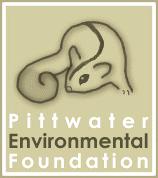Inbox and Environment News: issue 290
November 20 - 26, 2016: Issue 290
“When The Last Tree Is Cut, The Last Fish Is Caught, And The Last River Is Polluted; When To Breathe The Air Is Sickening, You Will Realize, Too Late, That Wealth Is Not In Bank Accounts And That You Can’t Eat Money.”
Alanis Obomsawin - an Abenaki from the Odanak reserve, fromConversations with North American Indians Ch.chapter author Ted Poole, of Who is the Chairman of This Meeting?: A Collection of Essays. compiled by Ralph Osborne. Toronto, Neewin Pub. Co., 1972.
In 1894 the importance of conserving natural resources was recognised and expressed in a report by the State Fish and Game Commissioner of North Dakota. A passage from this report bears similarity to that attributed in 1972 to Alanis Obomsawin:
"Present needs and present gains was the rule of action—which seems to be a sort of transmitted quality which we in our now enlightened time have not wholly outgrown, for even now a few men can be found who seem willing to destroy the last tree, the last fish and the last game bird and animal, and leave nothing for posterity, if thereby some money can be made."
Alanis Obomsawin - an Abenaki from the Odanak reserve, fromConversations with North American Indians Ch.chapter author Ted Poole, of Who is the Chairman of This Meeting?: A Collection of Essays. compiled by Ralph Osborne. Toronto, Neewin Pub. Co., 1972.
In 1894 the importance of conserving natural resources was recognised and expressed in a report by the State Fish and Game Commissioner of North Dakota. A passage from this report bears similarity to that attributed in 1972 to Alanis Obomsawin:
"Present needs and present gains was the rule of action—which seems to be a sort of transmitted quality which we in our now enlightened time have not wholly outgrown, for even now a few men can be found who seem willing to destroy the last tree, the last fish and the last game bird and animal, and leave nothing for posterity, if thereby some money can be made."
Conservation Groups Vow To Restore Environmental Protections
November 17, 2016: NSW Nature Conservation CouncilConservation groups have vowed to continue fighting for strong, just environmental protections for native animals and bushland after the Baird government today pushed its weakened land-clearing laws through parliament.
Nature Conservation Council CEO Kate Smolski said: “These laws will not deliver a lasting peace for landholders because conservationists are determined to struggle for as long as it takes to ensure that our government enacts and enforces just, effective protections for the wildlife and bushland that is our common heritage.”
National Parks Association CEO Kevin Evans said: “In 10 years’ time, when the effects of climate change start to bite and our farmlands become hotter, drier and less productive, people will look back at these laws and marvel at the negligence of the government that introduced them.”
The Wilderness Society National Director Lyndon Schneiders said:“It beggars belief that this government not only wants to send us back to the bad old days of erosion and salinity we saw in the ‘90s, but also wants to take the brakes off out-of-control land clearing at a time when climate change is making farming ever more difficult.”
Paul Toni, Conservation Director - Sustainable Futures, of WWF-Australia said: “It defies logic to legislate to accelerate land-clearing and wildlife habitat destruction when more native species than ever are on the brink of extinction, often because so much habitat has already been lost. These laws will also accelerate the destruction of topsoil, pollute watercourses, undermine efforts to address climate change and waste some of the hundreds of millions of dollars spent by the NSW and federal governments to rehabilitate our farms and forests over the last decade."
Humane Society International’s Australian Director Michael Kennedy said: “The Baird government today has done the people of NSW a terrible disservice by passing these laws. We vow to hold Premier Baird and his government accountable for this act of environmental vandalism.”
Total Environment Centre Director Jeff Angel said: “Government talks about being in touch with the community – they are about to find out these laws are supported by no significant groups other than the big agribusinesses that stand to make super-profits by converting woodlands to crops.”
WIRES NSW CEO Leanne Taylor said: “These proposed laws will significantly increase suffering of animals killed, injured and displaced by land clearing. Land clearing already kills more than 200,000 mammals each year in NSW. Now that toll is set to climb.”_________________________
Biodiversity Conservation Bill 2016
Type: GovernmentStatus: In Legislative Council, 2R, Debate adjourned 5 calendar days, Wed 9 Nov 2016Bills Remarks: LC: Bill and cognate declared urgent 9/11/2016Date Passed w'out amdt: Thu 17 Nov 2016
Local Land Services Amendment Bill 2016
Long Title: An Act to repeal the Native Vegetation Act 2003; and to amend the Local Land Services Act 2013 in relation to native vegetation land management in rural areas.Bills Remarks: LC: Bill and main cognate bill declared urgent 9/11/2016Date Passed w'out amdt: Thu 17 Nov 2016
Coastal Reforms
NSW Department of Planning & EnvironmentThe NSW coast provides a multitude of values and uses for the community. This competition for use and enjoyment places our coast under increasing pressure. The environmental and lifestyle benefits of coastal living continue to attract new residents and tourists. Planning for coastal communities must carefully balance the need to provide jobs, housing, community facilities and transport for a changing population whilst maintaining the coast's unique qualities and managing risks associated with developing along our coastlines. Coastal reforms - Planning for our future on the coastWe are improving the way we plan for development and natural hazards along our coastline. The Department of Planning and Environment, together with the Office of Environment and Heritage, is developing a new coastal management framework. The framework responds to existing and emerging coastal challenges and opportunities, with the aim of having thriving and resilient communities living and working on a healthy coast now and into the future. The Coastal Management State Environmental Planning Policy (SEPP) will establish a new, strategic land use planning framework for coastal management. It will support implementation of the management objectives set out in the Coastal Management Act 2016. The Coastal Management SEPP will integrate and improve current coastal-related SEPPs and ensure that future coastal development is appropriate and sensitive to our coastal environment, and that we maintain public access to beaches and foreshore areas. Once published, the Coastal Management SEPP will be the single land use planning policy for coastal development and will bring together and modernise provisions from SEPP 14 (Coastal Wetlands), SEPP 26 (Littoral Rainforests) and SEPP 71 (Coastal Protection). The Coastal Management SEPP will also better equip councils and coastal communities to plan for and effectively respond to coastal challenges such as major storms, coastal erosion and climate change impacts, through more strategic planning around coastal development and emergency management.
Community information sessionMonday, 5 December: 5.30 – 7pm Manly 16ft Skiff Sailing Club, Corner of East Esplanade & Stuart Street, Manly, 2095
Please RSVP to attend one of this session by contacting coastal@planning.nsw.gov.au. We are also keen to hear any questions you may have, or specific topics of interest for your local session, so please let us know when you RSVP. Have your say on the draft Coastal Management SEPPConsultation is now underway on the draft Coastal Management State Environmental Planning Policy (SEPP) and draft maps of the coastal management areas that make up the coastal zone. The public consultation period for the draft SEPP and maps is from 11 November 2016 to 23 December 2016. We encourage our stakeholders and interested community groups to take a look at the reforms and have a say: online using the submission form below; and by mail to:Director, Planning FrameworksNSW Department of Planning and Environment GPO Box 39Sydney NSW 2001 The Department is also seeking feedback from the public on the draft Ministerial (‘section 117’) direction relating to rezoning land in the coastal zone and amending the coastal zone maps. The documents for consultation can be accessed below: Attachmentspublic consultation draft state environmental planning policy coastal management 2016 10 28.pdf (PDF 252KB)standard instrument local environmental plans amendment coastal management order 2016 07 08.pdf (PDF 148KB)draft local planning direction coastal management 2016.pdf (PDF 74KB)
How we are progressing coastal reforms
The release of the draft Coastal Management SEPP is the next step in finalising the Government coastal reforms program. Documents previously released for public consultation include: Thank you to all who have taken the time to provide feedback on various aspects of the coastal reform program to date. Taking into account public submissions, the new Coastal Management Act 2016 was passed by Parliament on 31 May 2016 and will commence following consultation on the draft Coastal Management SEPP. The Office of Environment and Heritage is currently finalising the Coastal Management Manual and a Toolkit of technical resources and advice for coastal managers. More information about the NSW coastal reforms, including analysis of public submissions from the previous consultation round, can be found on the Office of Environment and Heritage’s Coastal reforms webpage. The Department of Planning and Environment has recently issued a Planning Circular (PS 16-003) on the Coastal Management SEPP. This advice clarifies that where land is partly or wholly mapped by the draft Coastal Management SEPP, a planning certificate issued for that land should record that the draft SEPP applies to that land. PS 16-003 can be accessed here (PDF 266KB).
Coastal SEPP Mapping Tool Instructional Video
Phenotypic Variation And Differentiated Gene Expression Of Australian Plants In Response To Declining Rainfall
Haylee D'Agui, William Fowler, Sim Lin Lim, Neal Enright, Tianhua HePublished 16 November 2016.DOI: 10.1098/rsos.160637 The Royal Society
Declining rainfall is projected to have negative impacts on the demographic performance of plant species. Little is known about the adaptive capacity of species to respond to drying climates, and whether adaptation can keep pace with climate change. In fire-prone ecosystems, episodic recruitment of perennial plant species in the first year post-fire imposes a specific selection environment, offering a unique opportunity to quantify the scope for adaptive response to climate change. We examined the growth of seedlings of four fire-killed species under control and drought conditions for seeds from populations established in years following fire receiving average-to-above-average winter rainfall, or well-below-average winter rainfall. We show that offspring of plants that had established under drought had more efficient water uptake, and/or stored more water per unit biomass, or developed denser leaves, and all maintained higher survival in simulated drought than did offspring of plants established in average annual rainfall years.
Adaptive phenotypic responses were not consistent across all traits and species, while plants that had established under severe drought or established in years with average-to-above-average rainfall had an overall different physiological response when growing either with or without water constraints. Seedlings descended from plants established under severe drought also had elevated gene expression in key pathways relating to stress response. Our results demonstrate the capacity for rapid adaptation to climate change through phenotypic variation and regulation of gene expression. However, effective and rapid adaptation to climate change may vary among species depending on their capacity to maintain robust populations under multiple stresses.
Take Action Over Illegal Land-Clearing Cover-Up
Tuesday November 15, 2016: BirdLife AustraliaOn Monday night, the ABC’s Lateline program exposed an alarming story of illegal land clearing in NSW.
The story revealed that thousands of hectares of bushland have been bulldozed illegally by big agribusiness. Worse still, when the environment department tried to investigate, leaked emails reveal Nationals MP Kevin Humphries intervened to stop them.
Premier Baird and his government must ensure those responsible for illegal land clearing are held to account.
Take this quick online action - call for an urgent investigation into illegal land clearing.
Australia has one of the highest rates of land clearing in the world. The loss of habitat is pushing birds like the Swift Parrot and Regent Honeyeater to the brink of extinction.
The ABC’s investigation shows that the drive to weaken NSW’s land-clearing laws is coming from a group of well connected agribusinesses determined to bulldoze trees – not from small, family farmers.
Join our urgent call for a full investigation before Premier Baird passes his new land-clearing laws which could be as soon as today.
Paul SullivanBirdLife Australia CEO
Political Interference Into Enforcement Of Land-Clearing Laws Must Be Investigated
15 November, 2016: NSW Nature Conservation CouncilThe NSW Nature Conservation Council and NSW National Parks Association are calling for a full public investigation into the political interference in the enforcement of land-clearing laws following revelations by the ABC Lateline program last night. [1]
Last night’s program exposed the grubby background to the Baird governments’ controversial land clearing laws, set to pass through NSW Parliament today, including illegal clearing of Crown land, political intimidation and interference in land-clearing investigations, distressed farmers who have been used as political pawns, and murder of public officials.
The groups are also demanding the Baird government withdraw new land-clearing laws that are currently before parliament until the investigations are completed.
NPA CEO Kevin Evans said: “The disturbing revelations last night showed a politically well-connected class of landholder apparently operating above the laws that apply to the little guy.
“These laws must not go through parliament until the political interference by Nationals MPs in the enforcement of land-clearing laws is fully investigated.
“Honest family farmers who rejected illegal land clearing and assisted the Office of Environment and Heritage (OEH) investigations into allegations of illegal clearing have seen cases dropped and watched their neighbours profit from seemingly ill-gotten gains.
“Cowboys who were shown by ABC to have illegally cleared thousands of hectares of bush and bulldozed public Travelling Stock Routes to extend their farms will get a retrospective pat on the back if the Native Vegetation Act 2003 is repealed and Mr Bairds new laws pass through parliament.”
NCC CEO Kate Smolski said: “The Lateline report shows the contempt that some big agribusinesses have for environmental laws and the impact of their actions on their neighbours.
“The intervention of Nationals MP Kevin Humphries appears to have been an attempt to shut down legitimate investigations into land clearing. Major questions must now be asked of the National Party’s role in condoning illegal behaviour and one of its MPs using his influence to shut down legitimate investigations into environmental crimes.
“The only way forward is for a full investigation of the connections between big agribusiness, the National Party and decisions by the OEH to drop investigations.
“The bills Mr Baird now has before parliament have little to do with biodiversity conservation and everything to do with fast-tracking land clearing and property development. They will further the short-term interests of property developers and big agribusiness, not the communities and wildlife that depend on healthy soils, waterways and bushland for their long-term survival.”
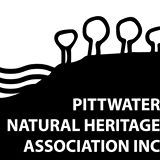
SUNDAY MORNING BIRDWATCHING with PNHA
Would you like to know more about our local birds and explore our bushland reserves? Then join us on one of our bird walks:
Our last walk of the year is at 7.30am on Sunday 27 November at Warriewood Wetlands. The summer migratory species will have arrived and the Wetlands will be home to nesting birds and birds with young. there should be plenty to see.Meet at Katoa Close, North Narrabeen.
Most walks last a couple of hours. Bring binoculars and morning tea for afterwards if you like. Contact pnhabirdwatching@gmail.com for details of each walk.
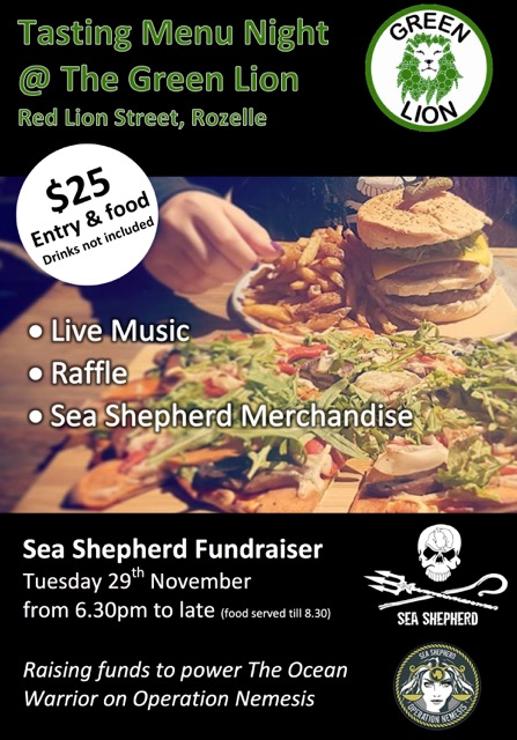

SUNDAY MORNING BIRDWATCHING with PNHA
Would you like to know more about our local birds and explore our bushland reserves? Then join us on one of our bird walks:
Our last walk of the year is at 7.30am on Sunday 27 November at Warriewood Wetlands. The summer migratory species will have arrived and the Wetlands will be home to nesting birds and birds with young. there should be plenty to see.Meet at Katoa Close, North Narrabeen.
Most walks last a couple of hours. Bring binoculars and morning tea for afterwards if you like. Contact pnhabirdwatching@gmail.com for details of each walk.

Sea Shepherd Announces 11th Antarctic Whale Defense Campaign: Operation Nemesis
August 30, 2016The marine conservation group Sea Shepherd Global is sending its vessels down to the Southern Ocean this December on its 11th direct-action whale defense campaign.
A 2014 landmark ruling by the International Court of Justice (ICJ) in The Hague declared the Japanese whaling program in the Antarctic not scientific in nature, despite their claims of hunting the whales for scientific research. The Japanese were also found in contempt of the Australian Federal Court for killing protected whales in the Australia Whale Sanctuary.
"If we cannot stop whaling in an established whale sanctuary, in breach of both Australian Federal and International laws, then what hope do we have for the protection of the world's oceans?” said Jeff Hansen, Managing Director of Sea Shepherd Australia. “We must make a stand and defend whales with everything we've got."After a one-year hiatus from whaling, the Japanese whaling fleet returned to the Antarctic last season despite the rejection of their revised research program by the International Whaling Commission, and slaughtered 333 Minke whales, more than half of them pregnant females.
“The international community has had two years to ensure Japan's compliance with the International Court of Justice ruling,” says Captain Peter Hammarstedt, Chairman of Sea Shepherd Australia. “But at the end of the year, the Japanese whaling fleet will once against sail from Japan with whales in their harpoon sights.”
Disappointed by the lack of action from the international community, Sea Shepherd Global is preparing to return to the Southern Ocean to protect the whales with a new patrol vessel, the Ocean Warrior. Built with the financial support of the Dutch Postcode Lottery, the British People’s Postcode Lottery and the Svenska PostkodLotteriet, the Ocean Warrior is the fastest in the Sea Shepherd Global fleet.
“For the first time we will have the speed to catch and outrun the Japanese harpoon ships, knowing speed can be the deciding factor when saving the lives of whales in the Southern Ocean,” says Sea Shepherd Global CEO Captain Alex Cornelissen. They estimate to have already saved the lives of over 5,000 whales in their previous ten Antarctic campaigns.
The Ocean Warrior will arrive in Australia at the end of this year to undergo the final preparations for the 2016/2017 direct-action campaign in the Antarctic. “Sea Shepherd’s 11th Southern Ocean Whale Defense Campaign is named Operation Nemesis, after the Greek goddess of inescapable justice,” announced Hammarstedt.Permaculture Northern Beaches Events
SPECIAL EVENT WITH AUSTRALIA'S LEADING EXPERTS IN SEED SAVING JUDE AND MICHEL FANTONand MC - WENDY HARMER Thursday November 24 at 7pm at Dee Why RSL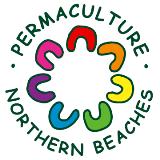 Seeds provide much of the nutritional value that humans need and seed plants are the foundation of human diets across the world, yet the industrial food chain continues to control and direct the food we have access to and this is reflected in what is being served in dining rooms across this country every night. Meanwhile there is environmental destruction, social upheaval and land grabs on a massive scale and we have become content with paying a premium to consume food like substances that are bad for our bodies.
Seeds provide much of the nutritional value that humans need and seed plants are the foundation of human diets across the world, yet the industrial food chain continues to control and direct the food we have access to and this is reflected in what is being served in dining rooms across this country every night. Meanwhile there is environmental destruction, social upheaval and land grabs on a massive scale and we have become content with paying a premium to consume food like substances that are bad for our bodies.
Save Our Seeds is a social impact and environmental event hosted by Permaculture Northern Beaches, and Kimbriki. This event will answer some serious and fundamental questions around the importance of the humble seed to food security and biodiversity.
Australia's leading seed experts Michel and Jude Fanton founded The Seed Savers’ Network in Australia in 1986 which quickly attracted national attention, www.seedsavers.net They now manage over 100 local seed networks in Australia, have initiated seed saving in 44 countries, and assisted setting up 35 food biodiversity projects. They bring the message of the need to conserve traditional varieties of food plants to Sydney for this one only event.
The night's MC is radio broadcaster, author and local legend - Wendy Harmer.
If you are interested in learning about easy and practical ways of saving and sprouting seeds or connecting with other like minded individuals and organizations then this is a must see event. There will also be seed giveaways and raffle prizes. Numbers are limited and bookings are essential. Reserve your place using the link below:
ENTRY BY DONATION - 7PM AT DEE WHY RSL Showroom at 932 Pittwater Road, Dee Why.
 Seeds provide much of the nutritional value that humans need and seed plants are the foundation of human diets across the world, yet the industrial food chain continues to control and direct the food we have access to and this is reflected in what is being served in dining rooms across this country every night. Meanwhile there is environmental destruction, social upheaval and land grabs on a massive scale and we have become content with paying a premium to consume food like substances that are bad for our bodies.
Seeds provide much of the nutritional value that humans need and seed plants are the foundation of human diets across the world, yet the industrial food chain continues to control and direct the food we have access to and this is reflected in what is being served in dining rooms across this country every night. Meanwhile there is environmental destruction, social upheaval and land grabs on a massive scale and we have become content with paying a premium to consume food like substances that are bad for our bodies.Friends Of Narrabeen Lagoon Catchment Activities
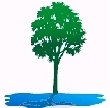 November 28, 2016 7pm: ForumThis is a most important forum where the Minister for Planning, Rob Stokes, MP, and the Administrator for Northern Beaches Council, Dick Persson, will each speak about Narrabeen Lagoon State Park and its future.
November 28, 2016 7pm: ForumThis is a most important forum where the Minister for Planning, Rob Stokes, MP, and the Administrator for Northern Beaches Council, Dick Persson, will each speak about Narrabeen Lagoon State Park and its future.
Please make the effort to be there - reply to this email: email@narrabeenlagoon.org.au giving the name/s of people wanting to attend and we will send you your ticket/s.
Enjoy the outdoors with one of these walksTerrey Hills to Deep Creek Sunday 4/12/20163 hr walk starting 8am at Terrey Hills cross the Deep Creekcatchment valley and feeder creek and end in Oxford Falls.See and identify spectacular Sydney sandstone flora. Bring ascrewdriver for 30 min weeding near the end of the walk.Allow 4 hrs. Carpool required. Phone Conny 0432 643 295
Oxford Falls Triangle 15/1/173 hour bushwalk starting 4.00pm from Morgan Rd, OxfordFalls. We identify plants in blossom and on the way home do20 min weeding of Whisky Grass. Please bring a screwdriveras a digging stick. Phone Conny 0432643295
 November 28, 2016 7pm: Forum
November 28, 2016 7pm: ForumKoalas To Be Better Protected Under Improved Policy To Conserve Habitat
November 18, 2016: Departmental Media Release - Department of Planning and Environment
One of Australia’s most iconic native animals, the koala, will be better protected under an improved policy proposed by the NSW Government that will conserve their natural habitat.
A NSW Department of Planning and Environment spokesperson saidproposed updates to the State Environmental Planning Policy 44 – Koala Habitat Protection, will better conserve and manage vegetation that provides habitat for koalas.
“Koalas are one of our most recognisable and iconic native animals and what this change will do is better preserve areas that are vital to their survival,” the spokesperson said.
“This is the first step in improving the structure and effectiveness of the State policy and will inform a more comprehensive review of koala habitat protection.”
The Department is updating the policy to assist councils to preserve koala habitat and also simplifying the planning system to make it easier for people to use. Councils are an important part in managing the local environment and the proposed updates will support them in the preparation of management plans.
“This will simplify the assessment process for development applications situated in areas not covered by a management plan and ensure the consistent use of criteria to protect koala habitat across NSW,” the spokesperson said.
“The Department has worked with councils and key non-government organisations including koala protection groups, to inform these proposed updates.”
The update of the policy will:
- assist councils to prepare comprehensive plans of management
- make it clearer to assess proposals that may impact on koala habitat
- update the content of the policy, including the names of the councils to which it applies, the list of tree species and the definitions of koala habitat
- ensure koala habitat is considered early in the strategic planning process.
The program is part of the NSW Government’s commitment to create an easy to use planning system that effectively addresses matters of state and regional significance.
Submissions on the proposed updates to the State policy on koala habitat protection can be made until 16 December 2016.
Further information can be found at www.planning.nsw.gov.au/Koala-habitat.
November 18, 2016: Departmental Media Release - Department of Planning and Environment
One of Australia’s most iconic native animals, the koala, will be better protected under an improved policy proposed by the NSW Government that will conserve their natural habitat.
A NSW Department of Planning and Environment spokesperson saidproposed updates to the State Environmental Planning Policy 44 – Koala Habitat Protection, will better conserve and manage vegetation that provides habitat for koalas.
“Koalas are one of our most recognisable and iconic native animals and what this change will do is better preserve areas that are vital to their survival,” the spokesperson said.
“This is the first step in improving the structure and effectiveness of the State policy and will inform a more comprehensive review of koala habitat protection.”
The Department is updating the policy to assist councils to preserve koala habitat and also simplifying the planning system to make it easier for people to use. Councils are an important part in managing the local environment and the proposed updates will support them in the preparation of management plans.
“This will simplify the assessment process for development applications situated in areas not covered by a management plan and ensure the consistent use of criteria to protect koala habitat across NSW,” the spokesperson said.
“The Department has worked with councils and key non-government organisations including koala protection groups, to inform these proposed updates.”
The update of the policy will:
- assist councils to prepare comprehensive plans of management
- make it clearer to assess proposals that may impact on koala habitat
- update the content of the policy, including the names of the councils to which it applies, the list of tree species and the definitions of koala habitat
- ensure koala habitat is considered early in the strategic planning process.
The program is part of the NSW Government’s commitment to create an easy to use planning system that effectively addresses matters of state and regional significance.
Submissions on the proposed updates to the State policy on koala habitat protection can be made until 16 December 2016.
Further information can be found at www.planning.nsw.gov.au/Koala-habitat.
Exemption Granted For NSW Shark Net Trial
16 November 2016: Media release - The Hon. Josh Frydenberg MP, Minister for the Environment and EnergyThe Federal Government has granted the NSW Government an exemption under national environment law to conduct a 12 month shark net trial on the NSW north coast following a number of attacks.
The trial is expected to play a major role in preventing sharks from interacting with ocean users.
In making the decision on the NSW application, the Federal Government considered the national interest in making the exemption and balanced concerns about public safety, economic harm and the impact to the marine environment, including the impact on threatened and migratory species.
With more than 11 million visitors spending $3.7 billion each year the north coast is a major national and international recreation and tourism destination, and the iconic surf beaches are the primary driver of tourism, which supports around one in three jobs in the region.
Since 1 January 2014, there have been 27 unprovoked interactions with sharks in NSW waters of which three resulted in fatalities and six resulted in serious injuries. Three recent attacks on the north coast occurred to surfers from white sharks in less than one month. The exemption has been granted to enable NSW to commence the trial immediately in anticipation of the peak holiday and tourism season when the beaches are most heavily used.
As proposed by the NSW Government the trial will commence in November 2016 and finish in November 2017, but the mesh nets will only be in operation for up to six months during this period.
At commencement of the NSW Government trial nets will be deployed at five priority locations including Lennox Head main beach, Sharpes Beach, Shelley Beach, Lighthouse Beach and Evans Head Beach, with an additional five nets available to be deployed at other beaches during the trial period.
The NSW Government will put in place a range of management and monitoring measures to reduce the impacts to the environment including acoustic warning devices to deter marine mammals.
The Federal Department of the Environment and Energy will receive regular reports from NSW on the implementation and monitoring of the trial.
North Coast Shark Net Trial Legislation Passes
November 16, 2016: NSW GovernmentThe NSW Parliament has passed legislation to expedite a trial of shark nets on five North Coast beaches. The trial nets are similar to those used in the Newcastle to Wollongong shark meshing area, where there has been only one fatality at a netted beach in more than 70 years. There may be some possible modifications to operational procedures to suit local conditions.
After extensive consultation with the local community, the beaches at which nets will be trialled are Lighthouse Beach, Shelly Beach and Sharpes Beach at Ballina, Seven Mile Beach at Lennox Head and Evans Head Beach.
The nets will be fitted with whale alarms and dolphin ‘pingers’ to deter marine mammals and reduce unintended by-catch.
Minister for Primary Industries Niall Blair said the legislation was an important step towards getting the shark net trial in place on the North Coast by the summer school holidays.
The traditional nets will complement the Government’s $16 million NSW Shark Management Strategy, which has increased aerial surveillance and up to 100 smart drumlines being installed, as well as is testing of new technologies including drones.
The NSW Government has also opened this year’s round of funding applications under the Observation Tower Grants program, which has been increased to a total of $200,000 to further support the Shark Management Strategy.
The towers provide a clearer line of vision for surf lifesavers and lifeguards to spot sharks, and assist in monitoring beach conditions. Applications are now open for coastal councils, Surf Life Saving NSW and the Australian Professional Ocean Lifeguards.
Judgement On Colton Coal: Laws Not Strong Enough To Protect Communities, Water Resources
November 17, 2016: Lock the GateThe Land Court judgement handed down today on the proposed Colton open-cut coal mine, near Maryborough, has highlighted again that the current legal structure in Queensland is too weak to protect communities under threat from mining.
The Land Court challenge by the Aldershot and District Against Mining Group focused on the impacts of the coal mine on the health and wellbeing of the people in Aldershot, who live just 2km from the proposed mine site, and also challenged the discharge of untreated waste water from the mine into the Mary River system, upstream of the Great Sandy Strait.
Vicki Perrin, from Wide Bay Burnett Protection Alliance said "The judgement by the Land Court to allow the mine to proceed largely unchanged is incredibly disappointing for the people of Aldershot, who have banded together because of their grave concerns about the impacts of this mine on their local community.
“Unfortunately, this judgement shows that the laws in Queensland are not strong enough to protect people and communities from the negative impacts of mining.
“The Colton open-cut coal mine will be located just 2km from the town of Aldershot, which is home to 1,042 people.
“It is outrageous that a whole community of people can be sacrificed for a coal mine that puts their health at risk from dangerous coal dust particles in the air, and from airborne dust contaminating the tank water which they all rely on for drinking.
“It is also very disturbing that the concerns about the Colton mine being allowed to dump untreated waste water into the iconic Mary River system have not been addressed by this judgement.
“The people of Queensland don’t accept the extraordinary tourist attractions of Fraser Island and the Great Sandy Strait becoming a dumping ground for the mining industry, but it seems our mining laws are too weak and biased to prevent even that from happening.
“The only change to mine operations from the court case are some changes to noise constraints on the mine, which are important for community well-being but which don’t seem to go far enough.
“This is a wake-up call for Queensland – mining laws are so weak that the health of people and communities and the future of our international tourism icons is being sacrificed.
“We’re calling for a re-write of the laws, so that communities are finally given a fair go and so that future decisions are required to put Queenslanders first before greedy mining giants” she said.
Aldershot and District Against Mining is a member group of the Wide Bay Burnett Protection Alliance. They were not able to be in court today, due to the ill health of their President.
Water Laws Weakened To Appease Adani Push Through Carmichael Mine
November 10, 2016: Lock the Gate AllianceA midnight sitting of Parliament has seen the Queensland Government take the extraordinary step of amending its own Bill in order to appease Indian coal miner, Adani, by short-circuiting public notification rules around water licences.
The government has created a special loophole for the Adani Carmichael coal mine, which aims to exempt the project from community objection rights in relation to groundwater licences.
The bizarre exemption appears to apply only to the Adani Carmichael project, and other mines including the Acland Stage 3 and Alpha coal mine will not be caught by it.
The amendment was passed as part of the Environmental Protection (Underground Water Management) and Other Legislation Amendment Bill.“It’s always appalling to see good legislation warped in this manner to give one company a special deal,” said Carmel Flint, spokesperson for Lock the Gate Alliance.
“It stinks of political favouritism and the abuse of good governance.“It looks like Adani is now writing Queensland’s water laws.
“This amendment detracts from the positive outcomes that the Bill contains for farmers affected by the Acland Stage 3 and Alpha coal mines, which appear set to retain community objection rights, and for other farmers who are forced into negotiating make good agreements with CSG companies.
"However, it is notable that all advanced mining projects, including the Adani Carmichael mine, will still be required to obtain associated groundwater licences, which is a positive step for proper assessment and accountability in relation to groundwater impacts.
“There are two members of the Queensland Parliament who can hold their heads high. Rob Pyne, the independent member for Cairns, and Peter Wellington, the speaker of the house, have been unwavering in their support for a better deal for farmers whose water is under threat from mining.
"We want to thank them for consistently stepping up to defend farming families and our precious groundwater resources” she said.
Australian Antarctic Station Leaders 2016-17
16th November 2016: Department of the Environment and Energy, Australian Antarctic Division
A new leadership team is taking the helm at Australia’s Antarctic research stations, Casey, Davis and Mawson.
The role of Station Leader at Casey research station will be filled by career policeman Paul Ross.
Paul has spent more than three decades in various roles with Victoria Police including serious crime and corruption investigation, and emergency management.
At Davis research station biologist, Kirsten Le Mar, will lead the team over the next 12 months.
Kirsten started her career studying seals at Davis station and penguins on the sub-Antarctic Macquarie Island more than two decades ago.
She has also worked as an expedition leader in both the Antarctic and Arctic regions.
Former Davis station leader, Alison Dean, is heading across to Mawson for the summer, ahead of Kat Panjari taking the role over winter.
Kat comes from a background in local and state government in Victoria and Western Australia.
She has led teams responsible for a range of public health and community services, project managed large community infrastructure projects, managed emergency recovery programs and brokered urban renewal projects in disadvantaged communities.
Impact Of East Antarctic Glacial Melt On Sea-Level Rise
Published on 15 Nov 2016: Department of the Environment and Energy, Australian Antarctic DivisionDr Ben Galton-Fenzi descibes how the Australian Antarctic Program will study two glaciers, the Totten and Sørsdal, in East Antarctica this summer to better understand the impact ice melt is having on global sea-level rise.
NPWS Yarrangobilly Caves House Receives Unique Accommodation Award
14 November 2016: Media Release - NSW Office of Environment & HeritageNational Parks and Wildlife Service’s (NPWS) Yarrangobilly Caves House has received a commendation award in the Unique Accommodation category at the Canberra and Region Tourism Awards on Friday 11 November.
Nestled in the picturesque Yarrangobilly Valley in the northern edge of Kosciuszko National Park, the lovingly restored heritage accommodation allows guests to revel in the wonder of a bygone era.
Manager of the Yarrangobilly Caves precinct, Mr George Bradford, said NPWS is thrilled to have received the commendation award among such a high calibre field of nominees.
“Following a long period of closure, Yarrangobilly Caves House was reopened as basic accommodation in 2007 and has since gone from strength to strength,” Mr Bradford said.
“NPWS invested $2.5 million and worked extremely hard to restore and preserve the historic house and return it to its former glory.
“Restoration was completed in 2012 and the House now provides flexible and varied accommodation offerings and can accommodate 38 people across two wings and 20 bedrooms.
“NPWS takes a proactive approach to direct the future of nature based tourism and this award acknowledges the incredible team from the Yarrangobilly Caves precinct and their commitment to providing a unique, relaxing and quality experience for our visitors to enjoy,” Mr Bradford said.
Deputy Chief Executive at the Office of Environment and Heritage (OEH), Robert Quirk, said the Canberra and Region Tourism Awards are a valuable platform for recognising the success and achievements of staff and their delivery of visitor experiences.
“Each year NPWS enters a number of awards programs throughout the country that provide a benchmark for best practice, encourage professionalism and innovation in business planning and service delivery, and highlight the value of the Australian tourism industry,” Mr Quirk said.
“I am thrilled that Yarrangobilly Caves House has been awarded in the Unique Accommodation category, particularly when this has been a focus for NPWS in recent times,” Mr Quirk said.
Yarrangobilly Caves House is made up of the 1901 single storey section, containing the east and west wings that provide a private self-contained home experience and the 1917 double storey section with 11 rooms and a self-catering hotel-style experience.
The House is perfect for conferences, family gatherings and romantic getaways, and more information is available atwww.nationalparks.nsw.gov.au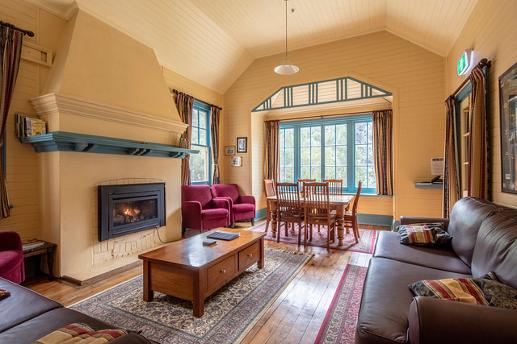
Lounge/dining room, fireplace, 1901 West Wing Yarrangobilly Caves House, Kosciuszko National Park - Photo courtesy Office of Environment & Heritage, taken June 25, 2016.

Lounge/dining room, fireplace, 1901 West Wing Yarrangobilly Caves House, Kosciuszko National Park - Photo courtesy Office of Environment & Heritage, taken June 25, 2016.
Middle Head Management Plan (Draft Amendment 2)
Date published: 03 November 2016 by Sydney Harbour Federation TrustInvitation for public commentThe Harbour Trust has prepared a Draft Amendment to the Middle Head Management Plan to guide the revitalisation and management of Middle Head – Headland Park, Mosman.
The Draft Amendment to the Management Plan is on public exhibition from 3 November 2016 to 16 December 2016. Comments are invited until 5.00pm AEST, on Friday 16 December 2016.
The Sydney Harbour Federation Trust is asking people for their feedback on the Draft Amendment to its Middle Head Management Plan (Draft Plan), which went on public exhibition today.
Harbour Trust Acting Executive Director Dr Susan Culverston said one of the main aims of the Draft Plan, which is open for public comment from Thursday 3 November to Friday 16 December, was to include more information about coordinated management of the natural environment with the NSW National Parks and Wildlife Service (NPWS).
“We have worked closely with NPWS in the preparation of our Draft Plan. Both agencies want to improve public access to the headland by establishing a connected network of paths.
“Our Draft Plan proposes creating an accessible circuit path around the Harbour Trust’s Middle Head precinct, which will link up with the NPWS walking tracks.
Dr Culverston said that extensive community consultation had played an important role in the preparation of the Draft Plan for Middle Head.
“We were pleased with the very positive response to our joint community consultation activities with over 800 responses to the survey conducted earlier this year.
“We are now looking forward to seeing this strong community engagement with the site and the ideas for its future continue through this public exhibition process.
Please click here for more information about the Draft Amendment how to provide your comments.
Results Released From World-Leading CO2 Monitoring Project
November 16, 2016: Australian Government's Geoscience Australia Geoscience Australia and the CO2CRC Limited have released new data from three sub-surface release experiments undertaken at the Ginninderra Controlled Release Facility in Canberra, Australia. These datasets will inform better monitoring strategies, which are essential for carbon capture and geological storage projects.
The pioneering research has enabled scientists to simulate release of carbon dioxide (CO2) from the soil into the atmosphere under controlled experiment conditions, and to assess the performance of different monitoring technologies.
Over 10 different organisations participated in the trials led by Geoscience Australia and CO2CRC Limited at the CSIRO Ginninderra Experiment Station in Canberra, Australia from 2012-2013.
The project included development of world-leading monitoring techniques, including using mobile sensor and remote sensing technology to detect CO2 emissions and impacts. Monitoring results were found to depend on climatic conditions, groundwater levels and the extent of the soil zone above the water table.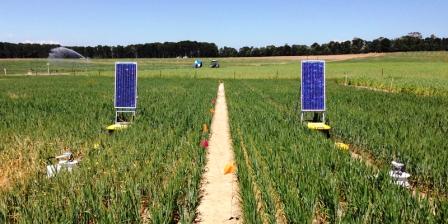
Monitoring equipment at the Geoscience Australia-CO2CRC Ginninderra Controlled Release Facility, Canberra.
A controlled release experiment involves safely releasing a known amount of CO2 into the soil, then monitoring how the CO2 moves through the soil and into the atmosphere. The results found significant horizontal movement in the near surface, fundamentally changing perceptions of how CO2 migrates and expresses itself at the near surface. Surface leakage was found to be patchy, a result similar to that observed in other controlled release facilities internationally.
There were also clear shifts in crop responses to high CO2 levels and in the soil microbial community. This is important for understanding the potential impact of CO2 leakage on surrounding agricultural crops. Effects observed during the trial were found to be very localised, and no lasting impact on crop productivity was observed for soils following release of high CO2 during the trials.
A highlight of the work was improved quantification techniques to accurately measure emission rates. Results from a comprehensive assessment of soil flux techniques will be presented at the 13th International Conference on Greenhouse Gas Technologies in Lausanne, Switzerland from 14-18 November. Over 20 monitoring techniques were trialled, with the datasets now available for free download via Geoscience Australia's website.
The intention of this data release is to make the data available for comparison with measurements taken at other controlled release experiments, CO2 storage projects and natural analogues. This will hopefully facilitate the further development of greenhouse gas monitoring technologies, methods and monitoring strategies and increase our understanding of the migration behaviour and impact of near surface CO2 leakage.
Further information

Nature In Cities: Can Urban Planners Enhance Human Well-Being Using Biodiversity?
The University of Sydney is conducting a survey on how diverse communities interact with components of nature and biodiversity in cities, and how this affects their well-being.
The results will help urban planners to prioritise specific elements of greenspace in order to maximise the community’s benefit.
Please take a short survey to help with this research.Survey at: https://www.surveymonkey.com/r/CFT77F5Bushcare in Pittwater
For further information or to confirm the meeting details for below groups, please contact Council's Bushcare Officer on 9970 1367Council's Cooee Newsletter - November - December 2016 HERE
BUSHCARE SCHEDULES
Where we work Which day What time
Avalon
Angophora Reserve 3rd Sunday 8:30 - 11:30am
Avalon Dunes 1st Sunday 8:30 - 11:30am
Avalon Golf Course 2nd Wednesday 3 - 5:30pm
Careel Creek 4th Saturday 8:30 - 11:30am
Toongari Reserve 3rd Saturday 9 - 12noon (8 - 11am in summer)
Bangalley Headland 2nd Sunday 9 to 12noon
Bayview
Winnererremy Bay 4th Sunday 9 to 12noon
Bilgola
North Bilgola Beach 3rd Monday 9 - 12noon
Algona Reserve 1st Saturday 9 - 12noon
Plateau Park 1st Friday 8:30 - 11:30am
Church Point
Browns Bay Reserve 1st Tuesday 9 - 12noon
McCarrs Creek Reserve Contact Bushcare Officer To be confirmed
Clareville
Old Wharf Reserve 3rd Saturday 8 - 11am
Elanora
Kundibah Reserve 4th Sunday 8:30 - 11:30am
Mona Vale
Mona Vale Beach Basin 1st Saturday 8 - 11am
Mona Vale Dunes 2nd Saturday+3rd Thursday 8:30 - 11:30am
Newport
Bungan Beach 4th Sunday 9 - 12noon
Crescent Reserve 3rd Sunday 9 - 12noon
North Newport Beach 4th Saturday 8:30 - 11:30am
Porter Reserve 2nd Saturday 8 - 11am
North Narrabeen
Irrawong Reserve 3rd Saturday 2 - 5pm
Palm Beach
North Palm Beach Dunes 3rd Saturday 9 - 12noon
Scotland Island
Catherine Park 2nd Sunday 10 - 12:30pm
Elizabeth Park 1st Saturday 9 - 12noon
Pathilda Reserve 3rd Saturday 9 - 12noon
Warriewood
Warriewood Wetlands 1st Sunday 8:30 - 11:30am
Whale Beach
Norma Park 1st Friday 9 - 12noon
Western Foreshores
Coopers Point, Elvina Bay 2nd Sunday 10 - 1pm
Rocky Point, Elvina Bay 1st Monday 9 - 12noon
Bushcare in Pittwater
Where we work Which day What time
Avalon
Angophora Reserve 3rd Sunday 8:30 - 11:30am
Avalon Dunes 1st Sunday 8:30 - 11:30am
Avalon Golf Course 2nd Wednesday 3 - 5:30pm
Careel Creek 4th Saturday 8:30 - 11:30am
Toongari Reserve 3rd Saturday 9 - 12noon (8 - 11am in summer)
Bangalley Headland 2nd Sunday 9 to 12noon
Bayview
Winnererremy Bay 4th Sunday 9 to 12noon
Bilgola
North Bilgola Beach 3rd Monday 9 - 12noon
Algona Reserve 1st Saturday 9 - 12noon
Plateau Park 1st Friday 8:30 - 11:30am
Church Point
Browns Bay Reserve 1st Tuesday 9 - 12noon
McCarrs Creek Reserve Contact Bushcare Officer To be confirmed
Clareville
Old Wharf Reserve 3rd Saturday 8 - 11am
Elanora
Kundibah Reserve 4th Sunday 8:30 - 11:30am
Mona Vale
Mona Vale Beach Basin 1st Saturday 8 - 11am
Mona Vale Dunes 2nd Saturday+3rd Thursday 8:30 - 11:30am
Newport
Bungan Beach 4th Sunday 9 - 12noon
Crescent Reserve 3rd Sunday 9 - 12noon
North Newport Beach 4th Saturday 8:30 - 11:30am
Porter Reserve 2nd Saturday 8 - 11am
North Narrabeen
Irrawong Reserve 3rd Saturday 2 - 5pm
Palm Beach
North Palm Beach Dunes 3rd Saturday 9 - 12noon
Scotland Island
Catherine Park 2nd Sunday 10 - 12:30pm
Elizabeth Park 1st Saturday 9 - 12noon
Pathilda Reserve 3rd Saturday 9 - 12noon
Warriewood
Warriewood Wetlands 1st Sunday 8:30 - 11:30am
Whale Beach
Norma Park 1st Friday 9 - 12noon
Western Foreshores
Coopers Point, Elvina Bay 2nd Sunday 10 - 1pm
Rocky Point, Elvina Bay 1st Monday 9 - 12noon
Long Reef Guided Walks
Below is the Fishcare Volunteers’ upcoming Walks and Talks which might be of interest to readers. We have been offering this free service now for about 15 years. Most days see somewhere round 30 people, young and old, and we even get people from places like Auburn and further afield. I add my bit as a former Australian Museum person and we also have a geologist to talk about the landward side of Long Reef. We’re dictated by tides, hence the irregular times, but always on a Sunday.Phil Colman
Free guided walks with Fishcare Volunteers Sunday 18 Sept 2016 2 pm – 4 pm Sunday 16 Oct 2016 2 pm – 4 pm Sunday 13 Nov 2016 1 pm – 3 pm Sunday 11 Dec 2016 12 noon – 2 pm Sunday 29 Jan 2017 3.30 pm – 5.30 pm Sunday 26 Feb 2017 2.30 pm – 4.30 pm Sunday 26 Mar 2017 1.30 pm – 3.30 pm Sunday 9 Apr 2017 12.30 pm – 2.30 pm • Subject to weather conditions • Bookings and enquiries by email: longreefwalks@gmail.com
Long Reef Fishcare Educational Walks Long Reef Aquatic Reserve, on Sydney’s northern beaches is a unique environment due to its geology and exposure to all four points of the compass. Protecting a huge variety of marine animals, birds and plants, it’s a great place to enjoy learning about our natural environment.
Department of Primary Industries NSW Fishcare Volunteers offer free, guided, educational walks onto the rock platform where in just two hours you’ll observe some of the vast variety of marine life.
You’ll also gain an understanding of the geographical features of the area, look at trace fossils and learn why some migratory birds travel tens of thousands of kilometres from Siberia and Japan to spend time at Long Reef.
An ideal family outing! More information: www.reefcarelongreef.org.au 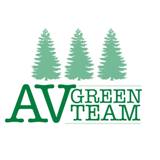 Av Green Team
Av Green Team
ProfileThis Youth-run, volunteer-based environment initiative has been attracting high praise from the founders of Living Ocean as much as other local environment groups recently.
Turning up for Beach Cleans, or starting their own, underlines an ‘action speaks louder than words’ ethos is at the core of this group. 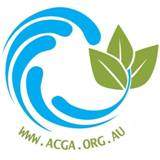 Avalon Community Garden
Avalon Community Garden
Community Gardens bring people together and enrich communities. They build a sense of place and shared connection.
Avalon Community Garden is a community led initiative to create accessible food gardens in public places throughout the Pittwater area. Our aim is to share skills and knowledge in creating fabulous local, organic food. But it's not just about great food. We also aim to foster community connection, stimulate creative ideas for community resilience and celebrate our abundance. Open to all ages and skills, our first garden is on the grounds of Barrenjoey High School (off Tasman Road ). Become part of this exciting initiative to change the world locally.
www.pcga.org.au Contact us info@pcg.org.au or Visit us atfacebook.com/acga.org; image artwork: www.gravey.com
Australian Native Foods website: http://www.anfil.org.au/
Think before you print ; A kilo of recycled paper creates around 1.8 kilograms of carbon emissions, without taking into account the emissions produced from transporting the paper. So, before you send a document to print, think about how many kilograms of carbon emissions you could save by reading it on screen.
Create a Habitat Stepping Stone!
Over 50 Pittwater households have already pledged to make a difference for our local wildlife, and you can too! Create a habitat stepping stone to help our wildlife out. It’s easy - just add a few beautiful habitat elements to your backyard or balcony to create a valuable wildlife-friendly stopover.
How it works
1) Discover: Visit the website below to find dozens of beautiful plants, nest boxes and water elements you can add to your backyard or balcony to help our local wildlife.
2) Pledge: Select three or more elements to add to your place. You can even show you care by choosing to have a bird appear on our online map.
3) Share: Join the Habitat Stepping Stones Facebook community to find out what’s happening in the natural world, and share your pics, tips and stories.
What you get
• Enjoy the wonders of nature, right outside your window. • Free and discounted plants for your garden. • A Habitat Stepping Stone plaque for your front fence. • Local wildlife news and tips. • Become part of the Pittwater Habitat Stepping Stones community.
Get the kids involved and excited about helping out!www.HabitatSteppingStones.org.au
No computer? No problem -Just write to the address below and we’ll mail you everything you need. Habitat Stepping Stones, Department of Environmental Sciences, Macquarie University NSW 2109
This project is assisted by the NSW Government through its Environmental Trust
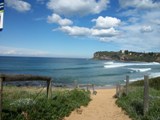 "I bind myself today to the power of Heaven, the light of the sun, the brightness of the moon, the splendour of fire, the flashing of lightning, the swiftness of wind, the depth of the sea, the stability of the earth, the compactness of rocks." - from the Prayer of Saint Patrick
"I bind myself today to the power of Heaven, the light of the sun, the brightness of the moon, the splendour of fire, the flashing of lightning, the swiftness of wind, the depth of the sea, the stability of the earth, the compactness of rocks." - from the Prayer of Saint Patrick
 Av Green Team
Av Green Team Avalon Community Garden
Avalon Community Garden
Community Gardens bring people together and enrich communities. They build a sense of place and shared connection.
Avalon Community Garden is a community led initiative to create accessible food gardens in public places throughout the Pittwater area. Our aim is to share skills and knowledge in creating fabulous local, organic food. But it's not just about great food. We also aim to foster community connection, stimulate creative ideas for community resilience and celebrate our abundance. Open to all ages and skills, our first garden is on the grounds of Barrenjoey High School (off
www.pcga.org.
Australian Native Foods website: http://www.anfil.org.au/
Think before you print ; A kilo of recycled paper creates around 1.8 kilograms of carbon emissions, without taking into account the emissions produced from transporting the paper. So, before you send a document to print, think about how many kilograms of carbon emissions you could save by reading it on screen.
Create a Habitat Stepping Stone!
Over 50 Pittwater households have already pledged to make a difference for our local wildlife, and you can too! Create a habitat stepping stone to help our wildlife out. It’s easy - just add a few beautiful habitat elements to your backyard or balcony to create a valuable wildlife-friendly stopover.
How it works
1) Discover: Visit the website below to find dozens of beautiful plants, nest boxes and water elements you can add to your backyard or balcony to help our local wildlife.
2) Pledge: Select three or more elements to add to your place. You can even show you care by choosing to have a bird appear on our online map.
3) Share: Join the Habitat Stepping Stones Facebook community to find out what’s happening in the natural world, and share your pics, tips and stories.
What you get
• Enjoy the wonders of nature, right outside your window. • Free and discounted plants for your garden. • A Habitat Stepping Stone plaque for your front fence. • Local wildlife news and tips. • Become part of the Pittwater Habitat Stepping Stones community.
Get the kids involved and excited about helping out!www.HabitatSteppingStones.org.au
No computer? No problem -Just write to the address below and we’ll mail you everything you need. Habitat Stepping Stones, Department of Environmental Sciences, Macquarie University NSW 2109
This project is assisted by the NSW Government through its Environmental Trust
 "I bind myself today to the power of Heaven, the light of the sun, the brightness of the moon, the splendour of fire, the flashing of lightning, the swiftness of wind, the depth of the sea, the stability of the earth, the compactness of rocks." - from the Prayer of Saint Patrick
"I bind myself today to the power of Heaven, the light of the sun, the brightness of the moon, the splendour of fire, the flashing of lightning, the swiftness of wind, the depth of the sea, the stability of the earth, the compactness of rocks." - from the Prayer of Saint Patrick
More Ways To Enjoy Marramarra National Park
17 November 2016: Media Release - NPWSThe National Parks and Wildlife Service (NPWS) has finalised the amendment to the Marramarra National Park plan of management allowing bush camping at Twin Beaches and new horse riding opportunities.
NPWS Regional Manager, Mr Peter Hay said under the revised plan, visitors have more options to explore and enjoy the nearly 12,000 hectare park on Sydney’s northern outskirts.
“The changes to the plan will enable the progressive opening of the existing Canoelands Ridge and Coba Ridge trails for horse riding, once final environmental assessments have been completed,” Mr Hay said.
“This is good news for horse riders in northern Sydney and supports our commitment to provide more opportunities for people to experience our national parks, while at the same time safeguarding the environment.
“Bush camping is now also allowed at Twin Beaches, near the junction of Berowra Creek and the Hawkesbury River, to give visitors the opportunity to enjoy short-stay boat and kayak based bush camping close to Sydney.
“NPWS has consulted with the community on these proposals and taken into account the views of a wide range of people, and potential environmental issues.
“It’s about providing recreational opportunities, which can help people better appreciate our wonderful national parks and reserves; and at the same time ensuring the unique values in our parks remain protected,” Mr Hay added.
The plan of management amendment can be viewed atwww.environment.nsw.gov.au.
Environmental Future Funding Package
The NSW Government has released a new NSW Climate Change Policy Framework(External link). The policy provides important context for the government’s approach to climate change. It sets two aspirational objectives:- achieving net zero emissions by 2050
- NSW being more resilient to a changing climate.
The government has also announced a $500 million funding package and released two draft climate change and energy savings plans for public consultation:
To ensure that the community is part of this important process, the government is seeking feedback on the two draft plans.
The submission form and information on how the community can have a say is available on the Make a submission page. Public submissions are due by 16 December 2016.
Information briefingsThe NSW Government will run webinar briefings to provide more information about new funding opportunities under these two draft plans, the public consultation process and the new climate change policy framework.
To register for a webinar briefing, click on the relevant date
Date Time16 November 2016 11am – 12:30pm23 November 2016 11am – 12:30pm1 December 2016 11am – 12:30pm
- achieving net zero emissions by 2050
- NSW being more resilient to a changing climate.
Have Your Say On A Modification To Hunter Valley Operations North Coal Mine
November 17, 2016: Departmental Media Release - Department of Planning and Environment
A proposal by HV Operations Pty Limited for a modification to the Hunter Valley Operations North coal mine is on exhibition from today for community consultation.
The Department of Planning and Environment is keen to hear the community’s views on the proposed modification, which seeks consent to partially fill the existing void within the mine’s Carrington Pit with fine reject from the mine’s coal preparation plant, rather than waste rock.
After coal is extracted from the pit it is then washed to separate the coal from other material called rejects. Two forms of reject material are produced, coarse and fine.
This modification is expected to provide an additional eight years of fine reject storage capacity for the mine, which is located 24 kilometres northwest of Singleton.
The waste rock originally planned to be used to fill the Carrington Pit will now be incorporated into HVO’s existing waste strategy, and be allocated to existing approved waste rock piles throughout the site. There is no change to the HVO North waste emplacement area heights associated with this modification.
A spokesperson for the Department of Planning and Environment said the local community always has an opportunity to share their views.
“Community consultation is an integral part of the planning process and the applicant will have to respond to the feedback we receive,” the spokesperson said.
“This feedback is taken into consideration as part of the assessment.
“It’s easy to participate by going online and we encourage everyone to take a look and have their say.”
To make a submission or view the Modification Request and accompanying documents, visit www.majorprojects.planning.nsw.gov.au.
Submissions can be made from Thursday 17 November 2016 until Thursday 1 December 2016.
Written submissions can also be made to:
Department of Planning and Environment, Attn: Director – Resource Assessments, GPO Box 39 . Sydney NSW 2001
The application and EIS are also available to view in person at:
Department of Planning & Environment: Information Centre, Level 22, 320 Pitt Street, Sydney
Singleton Council: Administration Centre, Corner of Queen Street and Civic Avenue, Singleton
Nature Conservation Council: Level 14, 388 Pitt Street, Sydney.
November 17, 2016: Departmental Media Release - Department of Planning and Environment
A proposal by HV Operations Pty Limited for a modification to the Hunter Valley Operations North coal mine is on exhibition from today for community consultation.
The Department of Planning and Environment is keen to hear the community’s views on the proposed modification, which seeks consent to partially fill the existing void within the mine’s Carrington Pit with fine reject from the mine’s coal preparation plant, rather than waste rock.
After coal is extracted from the pit it is then washed to separate the coal from other material called rejects. Two forms of reject material are produced, coarse and fine.
This modification is expected to provide an additional eight years of fine reject storage capacity for the mine, which is located 24 kilometres northwest of Singleton.
The waste rock originally planned to be used to fill the Carrington Pit will now be incorporated into HVO’s existing waste strategy, and be allocated to existing approved waste rock piles throughout the site. There is no change to the HVO North waste emplacement area heights associated with this modification.
A spokesperson for the Department of Planning and Environment said the local community always has an opportunity to share their views.
“Community consultation is an integral part of the planning process and the applicant will have to respond to the feedback we receive,” the spokesperson said.
“This feedback is taken into consideration as part of the assessment.
“It’s easy to participate by going online and we encourage everyone to take a look and have their say.”
To make a submission or view the Modification Request and accompanying documents, visit www.majorprojects.planning.nsw.gov.au.
Submissions can be made from Thursday 17 November 2016 until Thursday 1 December 2016.
Written submissions can also be made to:
Department of Planning and Environment, Attn: Director – Resource Assessments, GPO Box 39 . Sydney NSW 2001
The application and EIS are also available to view in person at:
Department of Planning & Environment: Information Centre, Level 22, 320 Pitt Street, Sydney
Singleton Council: Administration Centre, Corner of Queen Street and Civic Avenue, Singleton
Nature Conservation Council: Level 14, 388 Pitt Street, Sydney.
Cowal Gold Mine Mod 13 - Mine Life Extension
The Cowal Gold Operations Mine Life Modification (the Modification) involves continued operations at the existing CGO within ML 1535 for an additional 8 years to allow an additional 1.7 million ounces (Moz) of gold production (i.e. a total of approximately 5.5 Moz over the life of the modifiedCGO).
Existing CGO infrastructure would continue to be used for the Modification, with some alterations where necessary, including modification of theexisting tailings storage facilities to maximise/increase tailings storage capacity (Figure ES-2) and upgrades to the existing leach circuit within the process plant.
The proposed changes to the tailings storage facilities include connection of the existing two tailings storage facilities to utilise the area in between for additional tailings storage. The existing tailings management and seepage control measures would be replicated for this additional tailings storage area.
Project is currently on public exhibition and opportunity for public submissions is availableExhibition Start 18/11/2016Exhibition End 08/12/2016
View Documents and Make a Submission at:
Protection Of Tea Tree Lake Secured Under Coastal Management SEPP
November 18, 2016: Department of Planning and EnvironmentThe NSW Government plans to introduce stronger protections for Tea Tree Lake north of Broken Head, which includes placing the site on a list of the State’s most sensitive lakes.
Planning Minister Rob Stokes has released a draft Coastal Management SEPP for consultation until 23 December 2016.
As part of that SEPP the entire catchment of these sensitive areas will be mapped and have stronger controls applied to ensure environmental protection.
In response to earlier consultation and further evidence Mr Stokes said that Tea Tree Lake (also known as Lake Ainsworth) will be added to the list of sensitive lakes due to its high conservation value, which includes significant native plants and animals, rainforests and wetlands.
“Our coastline plays an important part of life, recreation and business in NSW. Millions of people enjoy the coast each year, including both NSW residents and visitors,” Mr Stokes said.
“It’s important that we protect the beautiful coastline and waters of our State and mapping Tea Tree Lake as a sensitive lake is an important step towards improving its protection.”Including Tea Tree on the list of sensitive lakes under the Coastal Management SEPP means the 5.25 hectare lake will be protected, as well as its entire catchment area.
Strict planning controls will apply to the site if the SEPP is finalised meaning that development on the site cannot occur unless:- it’s not likely to negatively impact the ecosystem or surface and groundwater
- it’s not likely to significantly impact on or be impacted by the coastal processes and features
- it’s not likely to impact the water quality of the lake
- it’s not likely to impact native vegetation, animals and their habitats, undeveloped headlands and rock platforms
- it will not impact Aboriginal cultural heritage and places
- it incorporates water sensitive design
- it will not impact on use of the surf zone.
The lake and its catchment are also significant in Aboriginal culture, particularly to the Bundjalung women.
The lake and part of its catchment area are currently protected under the National Parks and Wildlife Act 1974.
The draft SEPP includes strong controls for coastal environment areas that include coastal waters, estuaries, lakes and lagoons to ensure any development proposed in these waterways is appropriately assessed.
More information on the coastal reforms can be found atwww.planning.nsw.gov.au/Policy-and-Legislation/Coastal-Reform.
- it’s not likely to negatively impact the ecosystem or surface and groundwater
- it’s not likely to significantly impact on or be impacted by the coastal processes and features
- it’s not likely to impact the water quality of the lake
- it’s not likely to impact native vegetation, animals and their habitats, undeveloped headlands and rock platforms
- it will not impact Aboriginal cultural heritage and places
- it incorporates water sensitive design
- it will not impact on use of the surf zone.
Galaxies Sail On A Tranquil Sea, Cosmic Flash Shows
November 18, 2016: CSIROA brilliant flash of radio waves from the distant universe has given a unique glimpse of the gas that lies between galaxies.The flash was captured and analysed by a mostly Australian team, using CSIRO’s Parkes telescope and the results were published in the journal Science today.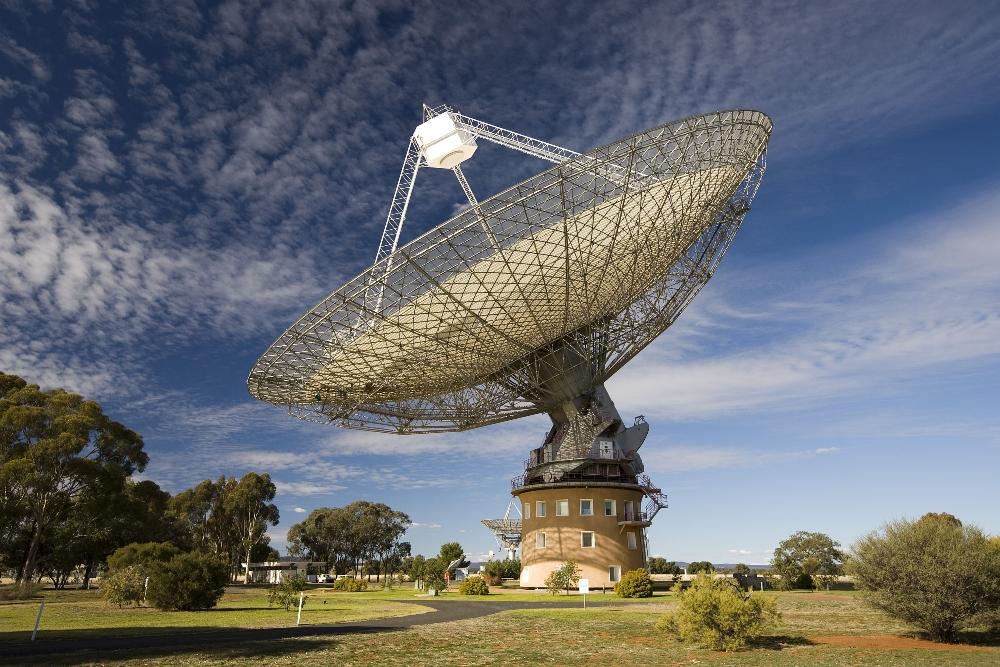
CSIRO’s Parkes telescope was first to detect the fast radio burst. Photo © David McClenaghan
"This flash lasted just a third of a millisecond, making it one of the briefest we've seen," said research team co-leader Dr Ryan Shannon of CSIRO, the International Research Centre for Radio Astronomy Research (ICRAR) and Curtin University.
Called fast radio bursts, or FRBs, such cosmic flashes were discovered with Parkes in 2007. Just 18 have been spotted to date, most with Parkes.
Astronomers think that between 2,000 and 10,000 go off all over the sky every day but their cause is unknown.
Coming from a small patch of sky containing only distant galaxies, the flash in question, FRB 150807, seems to have originated more than a billion light-years away.
Dr Vikram Ravi of Caltech who co-led the team with Dr Shannon said it was also exceptionally bright.
"By far the brightest measured since the first one in 2007," Dr Ravi said.
Combined brightness and distance meant FRB 150807 offered an unprecedented view of the thin gas in space between galaxies. Intergalactic gas, also called the cosmic web, 'feeds' galaxies, making them grow. It can alter radio waves passing through it, like a stained-glass window colouring light.
The 'imprint' on FRB 150807 shows that the intergalactic gas is calm and has very weak magnetic fields, qualities scientists had predicted but were unable to measure until now.
FRB 150807 was found with a real-time detection system developed by Swinburne University of Technology that is used on the Parkes telescope to study pulsars and fast radio bursts.
The researchers involved are affiliated with CSIRO, the International Centre for Radio Astronomy Research/Curtin University, Swinburne University, the ARC Centre of Excellence for All-sky Astrophysics (CAASTRO), the Australian National University and Manly Astrophysics; California Institute of Technology (Caltech) and the National Radio Astronomy Observatory in the USA; the SKA Organisation in the UK; and the Max Planck Institute for Radioastronomy in Germany.

Discovery Opens Door To New Alzheimer's Treatments
November 17, 2016: University of New South WalesAustralian researchers have shed new light on the nerve cell processes that lead to Alzheimer's disease (AD), overturning previously held ideas of how the disease develops and opening the door to new treatment options that could halt or slow its progression.
The study is published in the journal Science.
Studying human brain tissue, the UNSW and Neuroscience Research Australia research team identified a protein, kinase p38γ, which is lost as AD progresses. When they reintroduced the protein into the brains of mice, it was shown to have a protective effect against memory deficits associated with the disease.
"This study has completely changed our understanding of what happens in the brain during the development of Alzheimer's disease," said lead author UNSW Professor Lars Ittner.
Two of the hallmarks of Alzheimer's are the presence of protein plaques (made up of amyloid-beta) and tangles (made up of tau protein) in the brain. The accumulation of these plaques and tangles is associated with cell death, brain atrophy and memory loss.
The research team has revealed that a crucial step in the process that leads to tangles has been misunderstood. Previously, scientists believed the plaque-forming protein, amyloid-beta, caused a modification -- called phosphorylation -- to the tau protein resulting in cell death and, ultimately, Alzheimer's disease. Increased phosphorylation of tau eventually leads to its accumulation as tangles.
Results from the new study suggest that the phosphorylation of tau initially has a protective effect on neurons, and that amyloid-beta assaults the protective functionality until it is progressively lost. This is the stage at which toxicity levels cause the destruction of neurons and results in the cognitive deficits associated with Alzheimer's disease.
"Amyloid-beta induces toxicity in the neurons but the first step in tau phosphorylation is actually to decrease this toxicity," said Professor Ittner.
"This is a completely new mindset; that the reason tau becomes modified is actually to protect from damage."
The study used different mice models and human brain tissue from the Sydney Brain Bank to identify a protein called kinase p38γ, which assisted the protective phosphorylation of tau and interfered with the toxicity created by amyloid-beta.
"We used mice to screen for a very specific toxicity that we knew from previous work is involved in the progression of the disease," said Professor Ittner.
"We set out to find mediators of this progression, which led us quickly to our surprising finding. It was the opposite of what we expected. It was only when we changed our view of the process involved in the development of AD that these results started to make sense."
Studying human brain tissue, Professor Ittner and his team identified that p38γ is lost as AD progresses, however a small amount does remain in the brain.
"We found that p38γ, which initially offers protection, fades away early in the brains of people with AD, suggesting a loss of protection," he said.
"Part of our study involved reintroducing p38γ and increasing its activity. We saw that, in mice, it could prevent memory deficits from happening, so it has true therapeutic potential. If we can stimulate that activity, we may be able to delay or even halt the progression of Alzheimer's disease."
The next step for the researchers will be to develop their patented discoveries into a novel treatment for humans, subject to new funding.Journal References:
A. Ittner, S. W. Chua, J. Bertz, A. Volkerling, J. van der Hoven, A. Gladbach, M. Przybyla, M. Bi, A. van Hummel, C. H. Stevens, S. Ippati, L. S. Suh, A. Macmillan, G. Sutherland, J. J. Kril, A. P. G. Silva, J. Mackay, A. Poljak, F. Delerue, Y. D. Ke, L. M. Ittner. Site-specific phosphorylation of tau inhibits amyloid- toxicity in Alzheimers mice. Science, 2016; 354 (6314): 904 DOI: 10.1126/science.aah6205
Silver Surfers Embracing The Internet
November 17, 2016: National SeniorsA new report shows older people are going online on a daily basis, aided by new devices and fast broadband.
An overwhelming 72 per cent of those surveyed in the nbnTM, GranTechies Report said they could not imagine their life without the Internet and 93 per cent said they went online every day.
A total of 85 per cent used access to fast broadband for a range of tasks, including using email or Skype to link-in with family and friends, online shopping (59 per cent), and downloading or streaming video content (24 per cent).
Nearly two thirds believed they were just as tech-savvy as their children and grandchildren and 72 per cent believed the Internet made them feel more educated and purposeful.
They also believed it was very important to upskill and to keep up-to-date on tech trends, with more than half eager to learn more through online and face-to-face tutorials.
When it came to grandchildren, males were better than females at keeping in touch with their grandparents via social media.
Almost half the grandsons surveyed said they connected with their grandparents, compared with less than one third of granddaughters.
“Gone are the days where grandparents were thought of as tech dinosaurs – this research shows senior Australians are well and truly riding the tech wave,” said Nan Bosler, president of the Australian Seniors Computer Clubs Association.
“We are seeing an increasing number of Aussie grandparents regularly enjoying ‘how-to’ DIY videos to brush up on their cooking and building skills, downloading and streaming movies and even starting their own interactive blogs”.
The nbnTM network rollout is scheduled to be completed by 2020.
For more information, click here.
A Few Memories Of Early Years At Narrabeen
My family moved to Narrabeen in late 1942 and lived in a flat that was on top of what was to become Williams Bros Fish Shop. On the opposite corner was a Wine Bar, Newsagency, Post Office all were owned by the Mc Lean family. They also owned the Newsagency at Narrabeen Terminus.
The Brabants ran the winebar, Archie McLean the Newsagency and Kinder McLean the Post Office. When the paper truck would drop off the early morning papers the thud of the bundles hitting the footpath would wake me up, and I would get dressed and go over to the newsagency and help roll the papers and of course enjoy the Iced Vo-Vos with a cuppa. I was young as I had not started school at the time, and would then go on the Paper Run in the Indian Motor Bike in the sidecar.
Now this is the interesting part, the Paper Run went from Stuart St Collaroy to Mona Vale Rd, Mona Vale. Cec Abrahams drove the motor Bike and I used to hand him the papers to throw. I can remember Cec used to set rabbit traps in the scrub where the Rats Union ground is now and when we would come back from Mona Vale he would pick up his traps up usually with the nights catch in them.
I know we ate a lot of Rabbit in those days as meat was short because of the War. My Mum knew how to cook Rabbits.
Cec went off to the War and Archie McLean took over delivering the papers but in a T-Model Ford.The McLean family were pioneers of the Narrabeen district, and Archie used to tell me stories of his Father building Duck hides in the lake and that's how the Islands got started.
I spent my young years fishing, prawning with my Dad in the lake at the bottom of Devitt St. They nicknamed me Sabu the Jungle boy but then it became Sava Lloyd.
What a way to grow up, the Lake and the Ocean a 1/2 mile apart. I was a very lucky young man.
Ken LloydSava
Why Wounds Heal More Slowly With Age
November 17, 2016: Rockefeller UniversityOlder bodies need longer to mend. This reality of aging has been documented since World War I, with the observation that wounds heal slower in older soldiers. Yet until now, researchers have not been able to tease out what age-related changes hinder the body's ability to repair itself.
Recent experiments at The Rockefeller University explored this physiological puzzle by examining molecular changes in aging mouse skin. The results, described November 17 in Cell, delineate a new aspect of how the body heals wounds.
"Within days of an injury, skin cells migrate in and close the wound, a process that requires coordination with nearby immune cells. Our experiments have shown that, with aging, disruptions to communication between skin cells and their immune cells slow down this step," says Elaine Fuchs, the Rebecca C. Lancefield Professor and head of the Robin Chemers Neustein Laboratory of Mammalian Cell Biology.
"This discovery suggests new approaches to developing treatments that could speed healing among older people," adds Fuchs, who is also a Howard Hughes Medical Institute investigator.
Return of the skin cellsWhenever a wound occurs, the body needs to repair it quickly to restore its protective skin barrier. "Wound healing is one of the most complex processes to occur in the human body," says Brice Keyes, a former postdoc in Fuch's lab and currently a researcher at Calico Life Sciences. "Numerous types of cells, molecular pathways, and signaling systems go to work over timescales that vary from seconds to months. Changes related to aging have been observed in every step of this process." Keyes and Siqi Liu, an immunology specialist and a current Jane Coffin Childs postdoctoral fellow in in the lab, are co-first authors of the Cell article.
Both skin cells and immune cells contribute to this elaborate process, which begins with the formation of a scab. New skin cells known as keratinocytes later travel in as a sheet to fill in the wound under the scab.
The team focused on this latter step in healing in two-month-old versus 24-month-old mice -- roughly equivalent to 20- and 70-year-old humans. They found that among the older mice, keratinocytes were much slower to migrate into the skin gap under the scab, and, as a result, wounds often took days longer to close.
Wound healing is known to require specialized immune cells that reside in the skin. The researchers' new experiments showed that following an injury, the keratinocytes at the wound edge talk to these immune cells by producing proteins known as Skints that appear to tell the immune cells to stay around and assist in filling the gap. In older mice, the keratinocytes failed to produce these immune signals.
Seeking a reversalTo see if they could enhance Skint signaling in older skin, the researchers turned to a protein that resident immune cells normally release after injury. When they applied this protein to young and old mouse skin tissue in a petri dish, they saw an increase in keratinocyte migration, which was most pronounced in the older skin. In effect, the old keratinocytes behaved more youthfully.
The scientists hope the same principle could be applied to developing treatments for age-related delays in healing.
"Our work suggests it may be possible to develop drugs to activate pathways that help aging skin cells to communicate better with their immune cell neighbors, and so boost the signals that normally decline with age," Fuchs says.
Brice E. Keyes, Siqi Liu, Amma Asare, Shruti Naik, John Levorse, Lisa Polak, Catherine P. Lu, Maria Nikolova, Hilda Amalia Pasolli, Elaine Fuchs.Impaired Epidermal to Dendritic T Cell Signaling Slows Wound Repair in Aged Skin. Cell, 2016; 167 (5): 1323 DOI:10.1016/j.cell.2016.10.052
Teenage Male Whale Sharks Don’t Want To Leave Home
16 November 2016: AIMSResearchers from The University of Western Australia and Australian Institute of Marine Science, (AIMS) and collaborators across the Indian Ocean have completed a huge photo-identification study to assess the seasonal habits of whale sharks in the tropics. They were surprised to discover that the male juveniles didn’t seem to venture too far from home.
The researchers used photo-identification data, collected by citizen scientists, including crews working on the tour boats, and researchers, to assess the connectedness of five whale shark aggregation (gathering) sites across the entire Indian Ocean over a decade.
Comparing the unique markings of more than 1000 individual whale sharks, the team appraised whether the seasonal gatherings of these animals could be linked by migration.
After sifting through over 6000 photos, they found that, on average, 35 per cent of individuals were re-sighted at the same site in more than one year but that no sharks were found to have moved across the Indian Ocean. One shark was tracked between regional localities from the Seychelles to Mozambique, suggesting that links do occur but that populations on either side of the Indian Ocean are likely to be distinct.
PhD researcher and lead author, Samantha Andrzejaczek from UWA’s Oceans Institute and AIMS, said the researchers had initially thought the juveniles crossed oceans to visit other important sites during their migration, however it appeared their movements were strictly regional.
“This is good news for our whale sharks, Ms Andrzejaczek said. “Whale sharks are under threat from human impacts of hunting and ship strike and it makes it much easier to plan for conservation if we only have to deal with neighbouring countries in each region rather than localities spread across the entire Indian Ocean.”
Not only were the whale sharks staying in the region, many of them returned multiple times to Ningaloo, in Western Australia’s North West.
“Our whale sharks at Ningaloo are mostly male teenagers. They don’t become reproductive adults until they grow to sizes of more than eight metres in length and this is thought to take up to 30 years,” Ms Andrzejaczek said.
“Our young males don’t seem in any hurry to move on from their feeding grounds at Ningaloo – we have some individuals that have now been sighted here for 19 years and have even matured.”
Study co-author, Dr Mark Meekan of AIMS, said the study also highlighted the unknown facts about these sharks.
“Although they are the largest fish in the sea, they are still very hard to find – it’s a very big ocean out there.
“We know the teenage males are homebodies, but that does not necessarily apply to the rest of the population,” he said.
Adult females and males are rarely sighted at Ningaloo and at all other locations in the Indian Ocean.
“Finding these animals is going to take some effort, as our computer–simulation analysis of the data showed that we need more photos from more localities just to get a better estimate of migration patterns at even regional scales,” Dr Meekan said.
Ms Andrzejaczek said the photo-identification approach was a great opportunity for the public to get involved in whale shark conservation.
“Many of the photos used in the study were sourced from tourists who snorkelled with the sharks as part of the tourist industry, as well as the industry videographers and tour guides, she said.
“We even downloaded videos from YouTube to get identification shots. “Social media provides a great source of science for charismatic animals like whale sharks and we hope to encourage more engagement across the Indian Ocean.”
The study, part-funded by Quadrant Energy Ltd and the Department of Parks and Wildlife WA, was published today in Royal Society Open Science.
Acoustic Buoy Detecting Rare And Endangered Whales In New York Bight
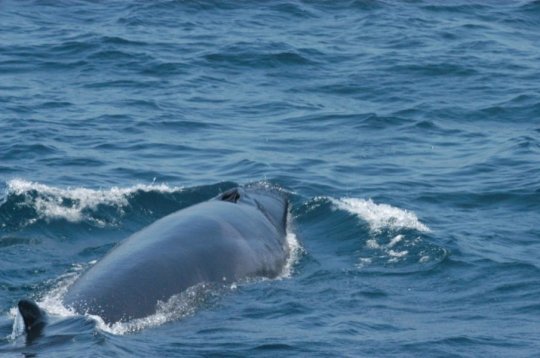
This image shows a sei whale, a species rarely observed in the waters of New York Bight. Credit: A.H. Kopelman for CRESLI.November 16, 2016: Wildlife Conservation Society
An acoustic buoy recently deployed by the Woods Hole Oceanographic Institution (WHOI) and WCS's (Wildlife Conservation Society) New York Aquarium is making its first near real-time detections of two rare great whale species in the New York Bight, including the highly endangered North Atlantic right whale.
On November 14th, the hi-tech buoy named "Melville" detected the telltale "up call" of the North Atlantic right whale, one of the world's highly endangered whale species that numbers only 500 individual animals. It is the second detection of a North Atlantic right whale made by the buoy since October 26th. The acoustic buoy made another rare find on October 31st with the detection of a sei whale, a species that grows up to 65 feet in length and is rarely observed in New York waters.
North Atlantic right whales are particularly vulnerable to getting hit by ships, so any information on the whereabouts of these animals along the coast is important. Researchers from WCS and WHOI report that the North Atlantic right whale detected on October 26th was outside of the New York Harbor Seasonal Management Area (SMA), one of a series of zones along the eastern seaboard established to protect the slow-swimming whales with boat speed restrictions during their migration periods. Vessel speed restrictions for the mid-Atlantic seasonal management areas -- including the SMA in New York Bight -- runs between November 1st and April 30th.
"Having the ability to detect North Atlantic right whales and other species rarely seen in New York waters is extremely important given their endangered status," said Dr. Howard Rosenbaum of WCS's Ocean Giants Program and co-lead of the WCS New York Aquarium-WHOI project. "In particular, our ability to detect North Atlantic right whales in this area near the shipping lanes but outside these seasonal management areas will hopefully help with efforts to safeguard this highly endangered species in the New York Bight."
"Ships are a significant hazard to whales in the New York region; the highest incidence of ship struck whales on the U.S. east coast occurs between the New York Bight and Chesapeake Bay. This new technology can help ships avoid lethal encounters with whales by alerting ship captains to the presence of the whales," said WHOI scientist Dr. Mark Baumgartner, developer of the whale detection software for the acoustic buoy and co-lead of the acoustic buoy project.
The North Atlantic right whale grows up to nearly 60 feet in length and is called the "right" whale because the first commercial whalers deemed it the best species to hunt. Consequently, this coastal whale was nearly wiped out by whaling fleets before receiving international protection in the 1930s. Recent research indicates that, despite modest population growth during the 2000's, the species is now in decline and its existence remains threatened by ship strikes and entanglement in fishing gear.
Sei whales are currently listed as "Endangered" on the IUCN's Red List and were also heavily exploited by commercial whaling fleets before becoming protected by federal and international laws. Little is known about this elusive giant, so any data on its presence in New York's coastal waters can help in management decisions. The WCS-New York Aquarium/WHOI research effort has now detected three whale species in New York Bight: the North Atlantic right whale, the sei whale, and the second largest animal on the planet, the fin whale. The acoustic buoy's most recent detection (made November 16th) was a fin whale, one of several detections of fin whales made since the buoy was deployed to its current location 22 miles south of Fire Island on July 23rd.
Information about sounds detected by the buoy, including whale vocalizations, are transmitted by satellite to computers in Baumgartner's laboratory in Woods Hole, Massachusetts. The data are analyzed by Julianne Gurnee of the NOAA Northeast Fisheries Science Center, a partner in the buoy project, and posted on a public website as well as through WCS's New York Aquarium as part of its Blue York Campaign.
The acoustic work by the WCS-New York Aquarium/WHOI complements previous acoustic research conducted by the Cornell's Bioacoustics Research Program, efforts by New York's Department of Environmental Conservation, along with collaborations with local NGOs such as the Coastal Research and Education Society of Long Island (CRESLI), Gotham Whale, and the Riverhead Foundation for Marine Research and Preservation.
"WCS is known for working to save elephants, tigers, and other threatened species around the world," said Jon Forrest Dohlin, Vice President and Director of WCS's New York Aquarium. "We're also doing important science right here in New York Bight by learning more about the North Atlantic right whale, one of the most endangered whales on the earth."
Materials provided by Wildlife Conservation Society.
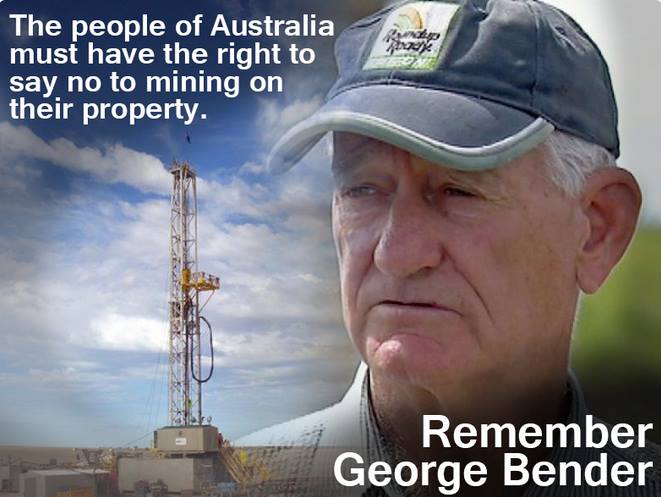


Clean Air For NSW Consultation Paper
Have your say on how we can improve air quality across NSWThe Clean Air for NSW Consultation Paper presents a proposed approach and actions for government to meet its goal of improving average air quality results across NSW. The Environment Protection Authority (EPA) is seeking community and stakeholder feedback on whether you think NSW is proposing the right actions to improve air quality.
Your submission can assist us in finalising Clean Air for NSW and improving air quality and public health.
Key questions to consider:- Do you have any comments on the proposed actions in the Clean Air for NSW Consultation Paper to improve air quality? (Please use headings to identify each action)
- Are there other issues and actions that Clean Air for NSW should cover?
- How do you want to be informed about and involved in improving air quality?
- Do you have any other comments or ideas on improving air quality in NSW?
Please include headings for specific actions where appropriate throughout your submission.
Make sure you include the following information at the top of your submission:- First name
- Last name
- Organisation you represent (if applicable)
- Email address
- Phone number
- Postcode
Submit your feedback by Friday 20 January 2017 Online
Email your comments to:
Post your submission to:
EPA Air PolicyPO Box A290Sydney South, NSW 1232
The EPA is committed to transparent processes and open access to information. The EPA may draw upon the contents of the submissions and quote from them or refer to them in publications. The EPA will treat the submission as public unless you indicate that you wish your submission to remain confidential.
The EPA will email an acknowledgment of submissions received by email within 72 hours of receipt.
- Do you have any comments on the proposed actions in the Clean Air for NSW Consultation Paper to improve air quality? (Please use headings to identify each action)
- Are there other issues and actions that Clean Air for NSW should cover?
- How do you want to be informed about and involved in improving air quality?
- Do you have any other comments or ideas on improving air quality in NSW?
- First name
- Last name
- Organisation you represent (if applicable)
- Email address
- Phone number
- Postcode
Nature Conservancy Writing Prize 2017
Enter The Nature Conservancy Australia Nature Writing Prize today!Calling all writers! The Nature Conservancy Australia is delighted to open the fourth biennial Nature Writing Prize.
$5,000 will be awarded to an essay of between 3,000 and 5,000 words in the genre of ‘Writing of Place’. The prize will go to an Australian writer whose entry is judged to be of the highest literary merit and which best explores his or her relationship and interaction with some aspect of the Australian landscape. The competition’s judges are award-winning journalist, author and editor Jo Chandler and novelist and critic James Bradley. The winning entry will be published in Griffith Review online as a multimedia essay.
The prize has been made possible thanks to a generous donation from the McLean Foundation, which promotes and celebrates the art of nature writing in Australia.
The deadline for submissions is January 27, 2017. Click here to learn more about the prize and review the terms and conditions of entry.Report illegal dumping
NSW Government
The RIDonline website lets you report the types of waste being dumped and its GPS location. Photos of the waste can also be added to the report.
The Environment Protection Authority (EPA), councils and Regional Illegal Dumping (RID) squads will use this information to investigate and, if appropriate, issue a fine or clean-up notice.
Penalties for illegal dumping can be up to $15,000 and potential jail time for anybody caught illegally dumping within five years of a prior illegal dumping conviction.
This is the first time RIDonline has been opened to the public. Since September last year, the EPA, councils, RID squads and public land managers have used it to report more than 20,000 tonnes of illegally dumped waste across more than 70 local government areas.
The NSW Government has allocated $58 million over five years to tackle illegal dumping as part of its $465.7 million Waste Less Recycle More initiative. NSW Premier Mike Baird has also committed to reducing the volume of litter by 40%, by 2020 to help keep NSW's environment clean.
Permaculture Northern BeachesFacebook page: www.facebook.com/permaculturenb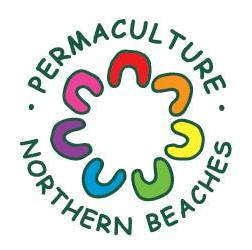 Want to know where your food is coming from?
Want to know where your food is coming from?
Do you like to enrich the earth as much as benefit from it?
Find out more here:
Report illegal dumping
NSW Government
The RIDonline website lets you report the types of waste being dumped and its GPS location. Photos of the waste can also be added to the report.
The Environment Protection Authority (EPA), councils and Regional Illegal Dumping (RID) squads will use this information to investigate and, if appropriate, issue a fine or clean-up notice.
Penalties for illegal dumping can be up to $15,000 and potential jail time for anybody caught illegally dumping within five years of a prior illegal dumping conviction.
This is the first time RIDonline has been opened to the public. Since September last year, the EPA, councils, RID squads and public land managers have used it to report more than 20,000 tonnes of illegally dumped waste across more than 70 local government areas.
The NSW Government has allocated $58 million over five years to tackle illegal dumping as part of its $465.7 million Waste Less Recycle More initiative. NSW Premier Mike Baird has also committed to reducing the volume of litter by 40%, by 2020 to help keep NSW's environment clean.
 Want to know where your food is coming from?
Want to know where your food is coming from?
Do you like to enrich the earth as much as benefit from it?
Find out more here:
Newport Community Gardens
Anyone interested in joining our community garden group please feel free to come and visit us on Sunday at 10am at the Woolcott Reserve in Newport!
Keep in Touch with what's happening on Newport Garden's Facebook:https://www.facebook.com/newportcg/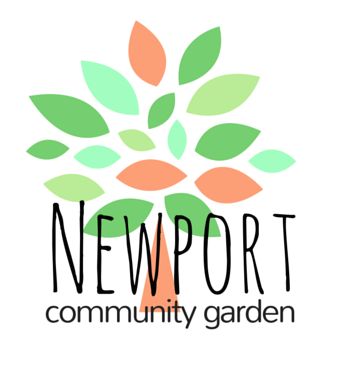
Pittwater's Environmental Foundation
Pittwater Environmental Foundation was established in 2006 to conserve and enhance the natural environment of the Pittwater local government area through the application of tax deductible donations, gifts and bequests. The Directors were appointed by Pittwater Council.
About 33% (about 1600 ha excluding National Parks) of the original pre-European bushland in Pittwater remains in a reasonably natural or undisturbed condition. Of this, only about 400ha remains in public ownership. All remaining natural bushland is subject to encroachment, illegal clearing, weed invasion, feral animals, altered drainage, bushfire hazard reduction requirements and other edge effects. Within Pittwater 38 species of plants or animals are listed as endangered or threatened under the Threatened Species Act. There are two endangered populations (Koala and Squirrel Glider) and eight endangered ecological communities or types of bushland. To visit their site please click on logo above.
Avalon Boomerang Bags 2016 Workshops
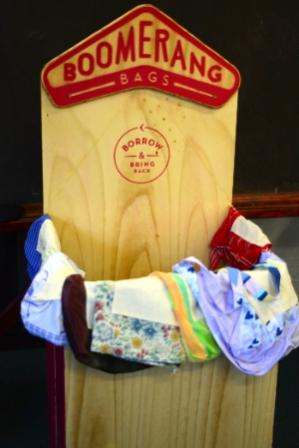 Boomerang Bag Working Bees run in Avalon Community Centre on Tuesdays 11:30am- 5pm.
Boomerang Bag Working Bees run in Avalon Community Centre on Tuesdays 11:30am- 5pm.
For those of you unable to come to workshops there are many other ways to get involved, just let us know you're willing by leaving a comment or sending us a message.
Pictured is a Boomerang Bag Box.
The boxes are located at:
Avalon OrganicsHertford ChemistAvalon WholefoodFresh Fruit and VegJohnson Bros Mitre TenAvalon MeatsAvalon Rec CentreWatch this space for another venue soon.
A huge thank you to everybody who has helped Boomerang Bags Avalon get this far. But the work is not over yet. Materials and more hands always welcome Facebook page Profile

What Does PNHA do?
On-ground bush regeneration. eg: Asparagus Fern Out Days
Activities: guided walks, bird-watching
Quaterly informative newsletter, online or paper
Members email group for leaset environmental news and events
AGM with Guest Speaker
Free advice for members on managing gardens for Native Vegetation and fauna habitat
Lobbies Pittwater Council and State Government on inappropriate management practices and development
Provides support to Council for PNHA-approved grant applications for environmental projects
Publications: Introductory Field Guide to Birds of Warriewood Wetlands & Irrawong Reserve, $20.00rrp, attractive cards with photos of Pittwater scenes, flora and fauna $2.00
Email: pnhainfo@gmail.com Or click on Logo to visit website.
Wildlife Carers and Organisations in Pittwater:
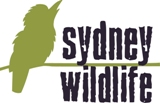 Sydney Wildlife rescues, rehabilitates and releases sick, injured and orphaned native wildlife. From penguins, to possums and parrots, native wildlife of all descriptions passes through the caring hands of Sydney Wildlife rescuers and carers on a daily basis. We provide a genuine 24 hour, 7 day per week emergency advice, rescue and care service.
Sydney Wildlife rescues, rehabilitates and releases sick, injured and orphaned native wildlife. From penguins, to possums and parrots, native wildlife of all descriptions passes through the caring hands of Sydney Wildlife rescuers and carers on a daily basis. We provide a genuine 24 hour, 7 day per week emergency advice, rescue and care service.
As well as caring for sick, injured and orphaned native wildlife, Sydney Wildlife is also involved in educating the community about native wildlife and its habitat. We provide educational talks to a wide range of groups and audiences including kindergartens, scouts, guides, a wide range of special interest groups and retirement villages. Talks are tailored to meet the needs and requirements of each group.
Found an injured native animal? We're here to help.
Keep the animal contained, warm, quiet and undisturbed. Do not offer any food or water.
Call Sydney Wildlife immediately on 9413 4300, or take the animal to your nearest vet. Generally there is no charge.
Find out more at: www.sydneywildlife.org.au
 Southern Cross Wildlife Care was launched over 6 years ago. It is the brainchild of Dr Howard Ralph, the founder and chief veterinarian. SCWC was established solely for the purpose of treating injured, sick and orphaned wildlife. No wild creature in need that passes through our doors is ever rejected.
Southern Cross Wildlife Care was launched over 6 years ago. It is the brainchild of Dr Howard Ralph, the founder and chief veterinarian. SCWC was established solely for the purpose of treating injured, sick and orphaned wildlife. No wild creature in need that passes through our doors is ever rejected.
People can assist SCWC by volunteering their skills ie: veterinary; medical; experienced wildlife carers; fundraising; "IT" skills; media; admin; website etc. We are always having to address the issue of finances as we are a non commercial veterinary service for wildlife in need, who obviously don't have cheque books in their pouches. It is a constant concern and struggle of ours when we are pre-occupied with the care and treatment of the escalating amount of wildlife that we have to deal with. Just becoming a member of SCWC for $45 a year would be a great help. Regular monthly donations however small, would be a wonderful gift and we could plan ahead knowing that we had x amount of funds that we could count on. Our small team of volunteers are all unpaid even our amazing vet Howard, so all funds raised go directly towards our precious wildlife. SCWC is TAX DEDUCTIBLE.
Find out more at: southerncrosswildlifecare.org.au/wp/

Pittwater's Environmental Foundation
Pittwater Environmental Foundation was established in 2006 to conserve and enhance the natural environment of the Pittwater local government area through the application of tax deductible donations, gifts and bequests. The Directors were appointed by Pittwater Council.
About 33% (about 1600 ha excluding National Parks) of the original pre-European bushland in Pittwater remains in a reasonably natural or undisturbed condition. Of this, only about 400ha remains in public ownership. All remaining natural bushland is subject to encroachment, illegal clearing, weed invasion, feral animals, altered drainage, bushfire hazard reduction requirements and other edge effects. Within Pittwater 38 species of plants or animals are listed as endangered or threatened under the Threatened Species Act. There are two endangered populations (Koala and Squirrel Glider) and eight endangered ecological communities or types of bushland. To visit their site please click on logo above.
Avalon Boomerang Bags 2016 Workshops
 Boomerang Bag Working Bees run in Avalon Community Centre on Tuesdays 11:30am- 5pm.
Boomerang Bag Working Bees run in Avalon Community Centre on Tuesdays 11:30am- 5pm.
For those of you unable to come to workshops there are many other ways to get involved, just let us know you're willing by leaving a comment or sending us a message.
Pictured is a Boomerang Bag Box.
The boxes are located at:
A huge thank you to everybody who has helped Boomerang Bags Avalon get this far. But the work is not over yet. Materials and more hands always welcome Facebook page Profile

What Does PNHA do?
On-ground bush regeneration. eg: Asparagus Fern Out Days
Activities: guided walks, bird-watching
Quaterly informative newsletter, online or paper
Members email group for leaset environmental news and events
AGM with Guest Speaker
Free advice for members on managing gardens for Native Vegetation and fauna habitat
Lobbies Pittwater Council and State Government on inappropriate management practices and development
Provides support to Council for PNHA-approved grant applications for environmental projects
Publications: Introductory Field Guide to Birds of Warriewood Wetlands & Irrawong Reserve, $20.00rrp, attractive cards with photos of Pittwater scenes, flora and fauna $2.00
Email: pnhainfo@gmail.com Or click on Logo to visit website.
Wildlife Carers and Organisations in Pittwater:
 Sydney Wildlife rescues, rehabilitates and releases sick, injured and orphaned native wildlife. From penguins, to possums and parrots, native wildlife of all descriptions passes through the caring hands of Sydney Wildlife rescuers and carers on a daily basis. We provide a genuine 24 hour, 7 day per week emergency advice, rescue and care service.
Sydney Wildlife rescues, rehabilitates and releases sick, injured and orphaned native wildlife. From penguins, to possums and parrots, native wildlife of all descriptions passes through the caring hands of Sydney Wildlife rescuers and carers on a daily basis. We provide a genuine 24 hour, 7 day per week emergency advice, rescue and care service.
As well as caring for sick, injured and orphaned native wildlife, Sydney Wildlife is also involved in educating the community about native wildlife and its habitat. We provide educational talks to a wide range of groups and audiences including kindergartens, scouts, guides, a wide range of special interest groups and retirement villages. Talks are tailored to meet the needs and requirements of each group.
Found an injured native animal? We're here to help.
Keep the animal contained, warm, quiet and undisturbed. Do not offer any food or water.
Call Sydney Wildlife immediately on 9413 4300, or take the animal to your nearest vet. Generally there is no charge.
Find out more at: www.sydneywildlife.org.au
 Southern Cross Wildlife Care was launched over 6 years ago. It is the brainchild of Dr Howard Ralph, the founder and chief veterinarian. SCWC was established solely for the purpose of treating injured, sick and orphaned wildlife. No wild creature in need that passes through our doors is ever rejected.
Southern Cross Wildlife Care was launched over 6 years ago. It is the brainchild of Dr Howard Ralph, the founder and chief veterinarian. SCWC was established solely for the purpose of treating injured, sick and orphaned wildlife. No wild creature in need that passes through our doors is ever rejected.
People can assist SCWC by volunteering their skills ie: veterinary; medical; experienced wildlife carers; fundraising; "IT" skills; media; admin; website etc. We are always having to address the issue of finances as we are a non commercial veterinary service for wildlife in need, who obviously don't have cheque books in their pouches. It is a constant concern and struggle of ours when we are pre-occupied with the care and treatment of the escalating amount of wildlife that we have to deal with. Just becoming a member of SCWC for $45 a year would be a great help. Regular monthly donations however small, would be a wonderful gift and we could plan ahead knowing that we had x amount of funds that we could count on. Our small team of volunteers are all unpaid even our amazing vet Howard, so all funds raised go directly towards our precious wildlife. SCWC is TAX DEDUCTIBLE.
Find out more at: southerncrosswildlifecare.org.au/wp/
Statement Regarding The Independent Commission Against Corruption Amendment Bill 2016
Fighting Corruption In NSW
- ICAC will be reconstituted as a three-member Commission comprising a Chief Commissioner and two other Commissioners;
- The use of the ICAC’s extraordinary power to conduct public inquiries will be required to be authorised by the Chief Commissioner and at least one other Commissioner;
- A CEO will be appointed to manage the ICAC’s day-to-day operations;
- The three-member Commission will publish guidelines relating to public inquiries that ICAC staff, and Counsel Assisting the ICAC, must follow;
- The ICAC and the ICAC Inspector will be required to give affected persons a reasonable opportunity to respond before including an adverse finding or opinion about the person in a report – and, where the person elects to have it included, include a summary of their response in the report; and
- The ICAC will be able to, where requested, gather evidence that may be admissible in a criminal prosecution after the completion of its investigations.
Despite Continued Increases In Activity, Emergency Department Waiting Times Are Relatively Stable
NSW Tops Nation In Timely Emergency Care
North Coast Shark Net Trial Legislation Passes
ANTIBIOTIC AWARENESS WEEK: How We Can All Help Fight Antibiotic Resistance
- Tools and resources to support general practice and raise awareness about antimicrobial resistance within the community.
- A One Health Antimicrobial Resistance in Australia website.
- Training workshops and online education for health professionals.
- Species-specific antibiotic guidelines for use by veterinarians in the clinical management of various species of animals.
- Implementing a national AMR and antibiotic usage surveillance system for future integration with animal health and agricultural surveillance.
Now’s The Time To Have Your Say On Egg Labelling
Men's Sheds Support Men's Health Across Australia
Parents Want Flexible Child Care To Manage Work-Life Clashes
Government Seeks Public And Industry Input On Value Capture
Supporting Veteran Employment Opportunities
Early Detection Prevents Identity Fraud
Australia’s First P-8 Poseidon Touches Down
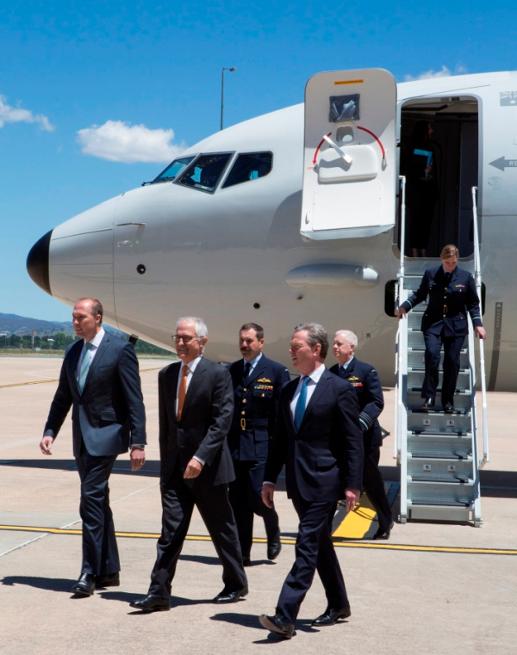
Changes To Feature Film Rounds
Lower Darling Breeding Bonanza Biggest In 20 Years
Screen Australia Announces More Than $2.3 Million For Documentary Projects
- An intimate look at the life of iconic INXS singer/songwriter Michael Hutchence in Mystify. INXS music video director Richard Lowenstein will combine never-before-seen archival footage and interviews with those closest to Michael for this documentary from Ghost Pictures which has also received Film Victoria support.
- Social impact feature documentary Dying to Live follows Allan Turner’s campaign to make Australia an ‘opt out’ organ donation country - a journey borne out of the heartbreaking loss of his seven-year-old daughter, who became one of the nation’s youngest ever donors. This was one of the six titles selected to participate at Good Pitch 2016.
- the story of five-time Walkley Award-winning journalist Liz Jackson turning the camera on herself for the most challenging story of her career – about her Parkinson’s diagnosis - in A Sense of Self from Contact Films with Film Victoria support. This documentary will air Monday 21 November at 8.30pm on the ABC.
- Feature documentary Flight of the Rhino from Wildbear Entertainment – a uniquely Australian perspective on the plight of the endangered rhino, a victim of illegal poaching. It follows a team of conservationists who embark on a controversial mission to airlift a herd of breeding rhinos from South Africa to Western Plains Zoo in Dubbo in the hopes of protecting the species for future generations.
- Feature documentary From Under the Rubble, which takes a look at the devastating cost of war on the civilian victims of the Israeli-Palestine conflict. Survivor Zeinat Samouni recounts the January 2007 attack on her Gaza neighbourhood that killed 48 members of her extended family; from Sensible Films.
- An untitled project from Oscar-winning director Eva Orner (Taxi to the Dark Side) and Hilla Medalia; more details to come.
- Observational documentary series The Mosque from Southern Pictures for SBS, which will use unprecedented access to an Australian Mosque and the community it serves to explore firsthand what it means to be a Muslim in Australia today; with funding support from Screen Queensland. MEDIA RELEASE
- Foxtel commissioned four-part documentary series The Archibald from Mint Pictures, chronicling a year in the life of eight Australian artists as they choose subjects for a portrait that will ultimately compete in the nation’s most prestigious art prize, culminating in the announcement of the 2017 winner.
- A behind the scenes look at one of Australia’s most influential and successful indie rock bands in Right Here: The Go-Betweens from Essential Media and Entertainment. This documentary is the first recipient of Screen NSW and ABC TV Art’s Documentary Feature Fund, and will premiere at the 2017 Sydney Film Festival.
NSW First In Australia To Protect Aboriginal Languages
Australia’s Latest Gender Equality Scorecard Released
- Men earn nearly $27,000 a year more than women
- Five out of six CEOs are men
- Pipeline of women into manager roles is strengthening
- Gender pay gap (full-time total remuneration): 23.1% (down 1.6 pp)
- Largest industry gender pay gap: Financial and Insurance Services: 33.5% (down 2.6 pp)
- Key Management Personnel who are women: 28.5% (up 2.4 pp)
- Employers with policies to support gender equality: 70.7% (up 4.5 pp)
- Employers who have conducted a gender pay gap analysis: 27.0% (up 3.0 pp)
- Appointments of women to manager roles: 42.6% (new data point)
World-First GP-Led Trial To Combat Blindness In Diabetics
Design Competition For Missing Middle Housing
ABC Radio Looks To 2017
- Welcome superb talent and new voices to our networks such as Chris Bath, Sarah Macdonald, Greta Bradman and Kim Williams
- Reinforce RN’s ability to provide engaging specialist spoken-word programming with increased strength in digital content
- Bolster resource and increase the compelling live music offer on digital station Double J
- Develop a dynamic and cohesive ABC Local Radio weekend programming offer
- Celebrate diversity through commitment to Indigenous programming
- Look forward to a new era for ABC Classic FM as Margaret Throsby moves to a new weekend show
- Offer a broad range of Religion & Ethics content through a vibrant offering including a new weekly RN show
- What Keeps Me Awake? a seasonal offer hosted by Kim Williams which will focus on high-profile Australians discussing what they believe are the issues, ideas and concerns that are mostly submerged in the daily overflow of episodic news and current affairs
- The Edge, a collaborative Science & Health content initiative led by award-winning journalist, presenter and podcaster Natasha Mitchell
- Arts Weekly, a weekly conversational podcast offering a digest of the best arts coverage from across the ABC, hosted by well-known journalist and presenter Cassie McCullagh
- An ongoing commission for 2016’s successful podcast pilot The Real Thing, which will also feature on the broadcast schedule.
City Deal Snapshot For Macarthur Region Businesses
Don’t Catch Birds, Baffle Them Instead
Fifth Landing Pad Finds A Home
Bright Radio Bursts Probe Universe's Hidden Matter
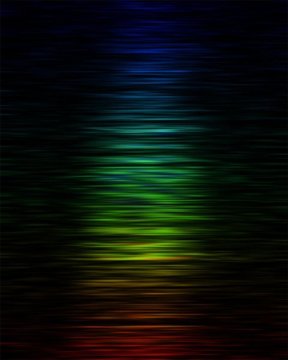
Nectarines The Latest Aussie Success Story In China
Disclaimer: These articles are not intended to provide medical advice, diagnosis or treatment. Views expressed here do not necessarily reflect those of Pittwater Online News or its staff.
